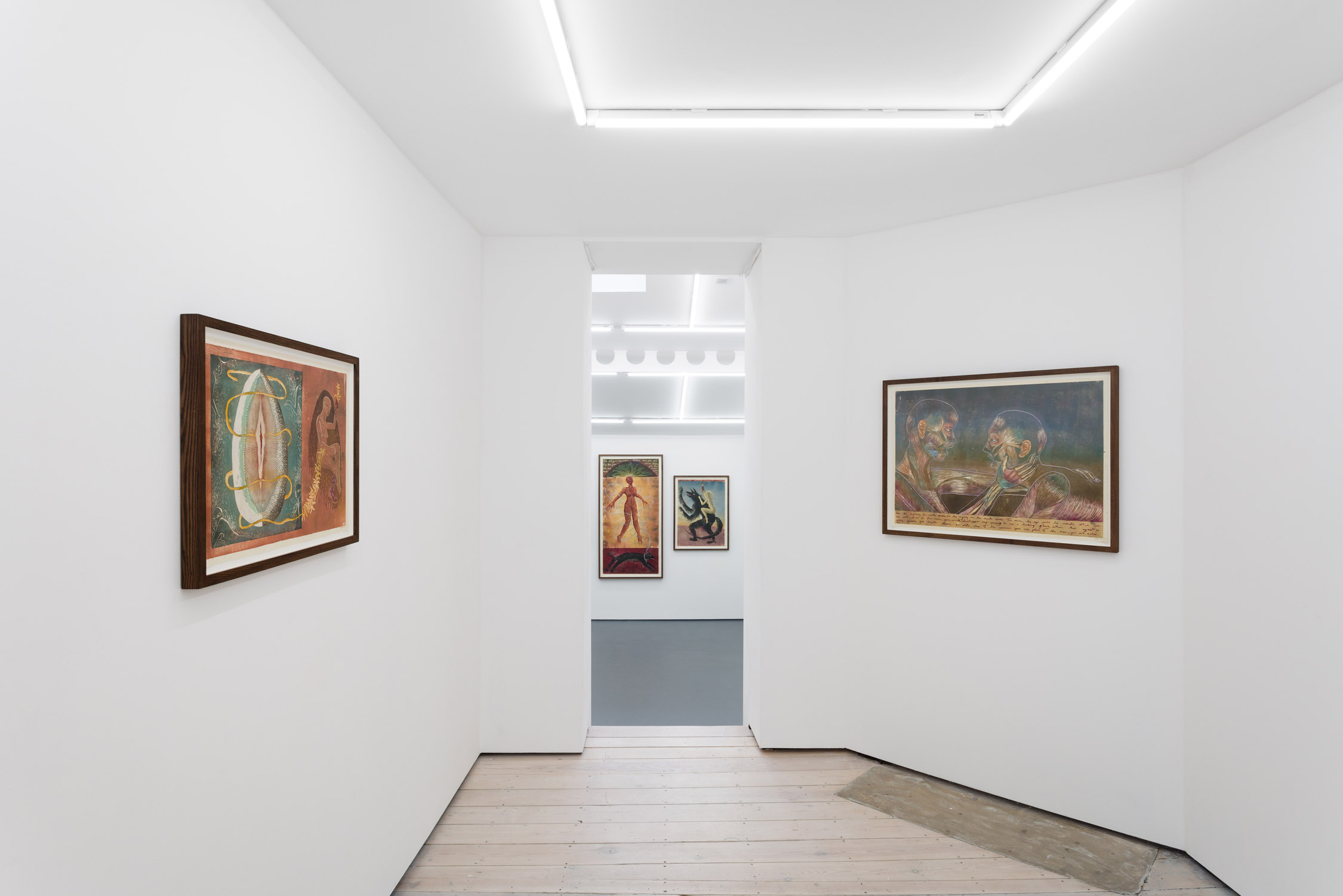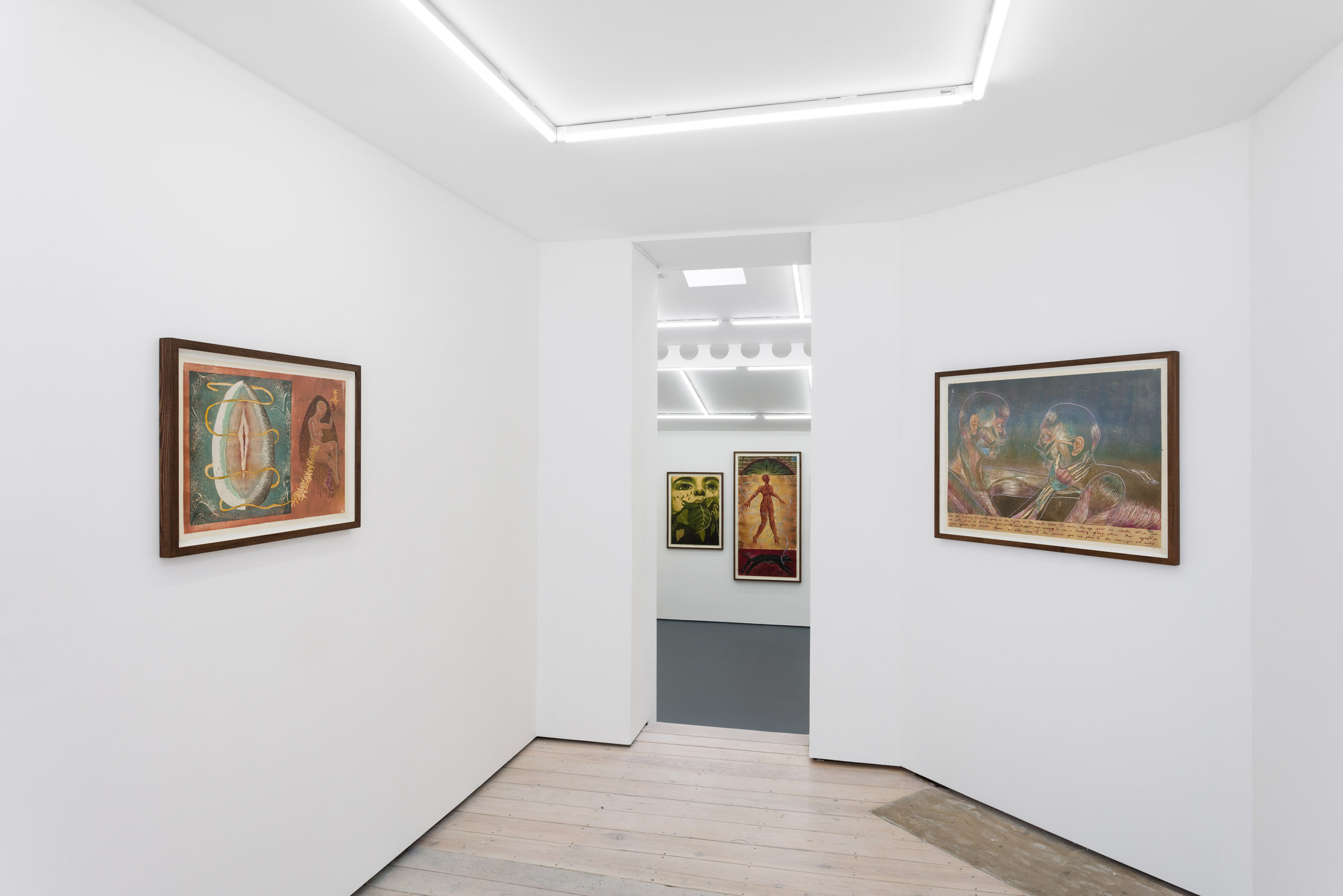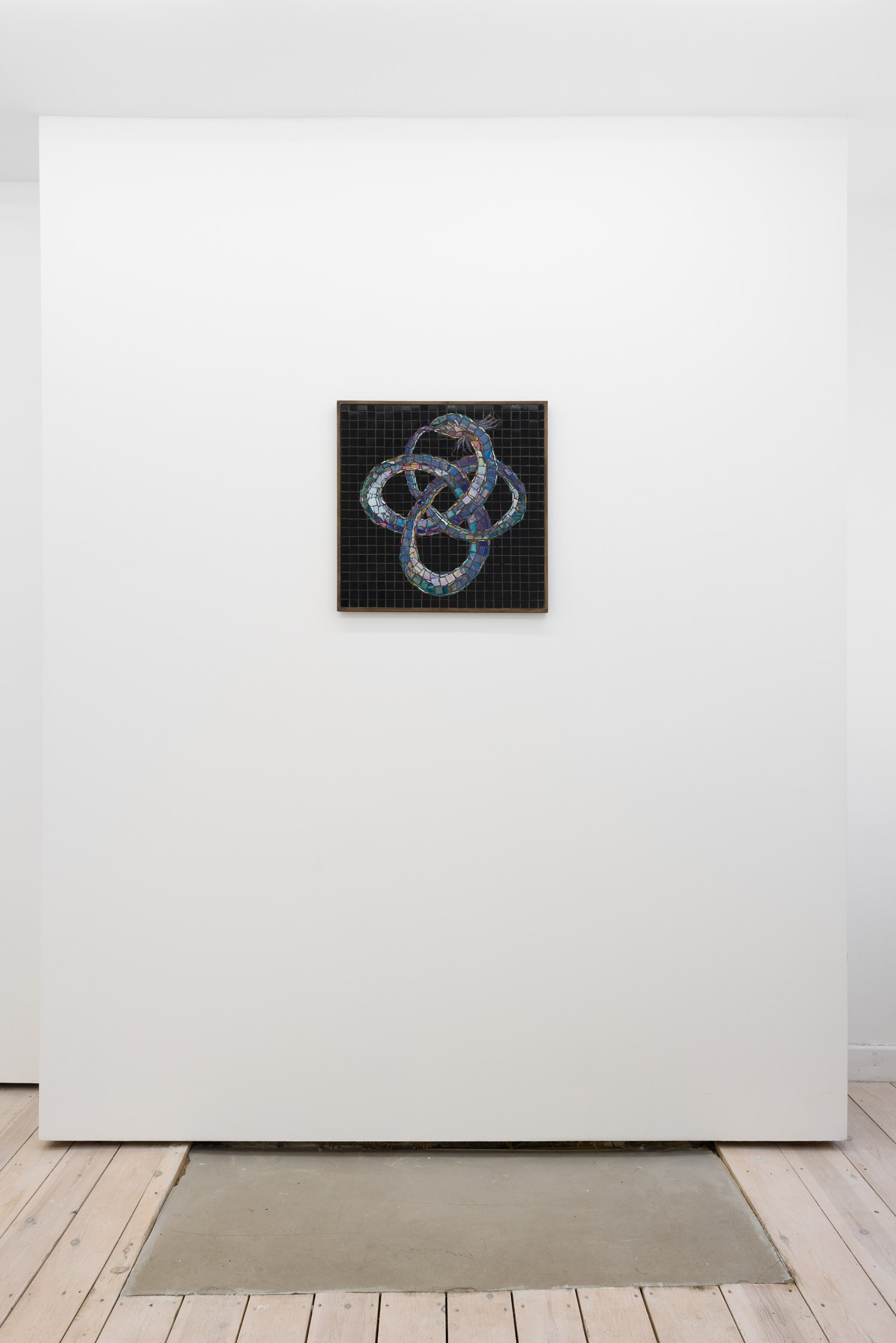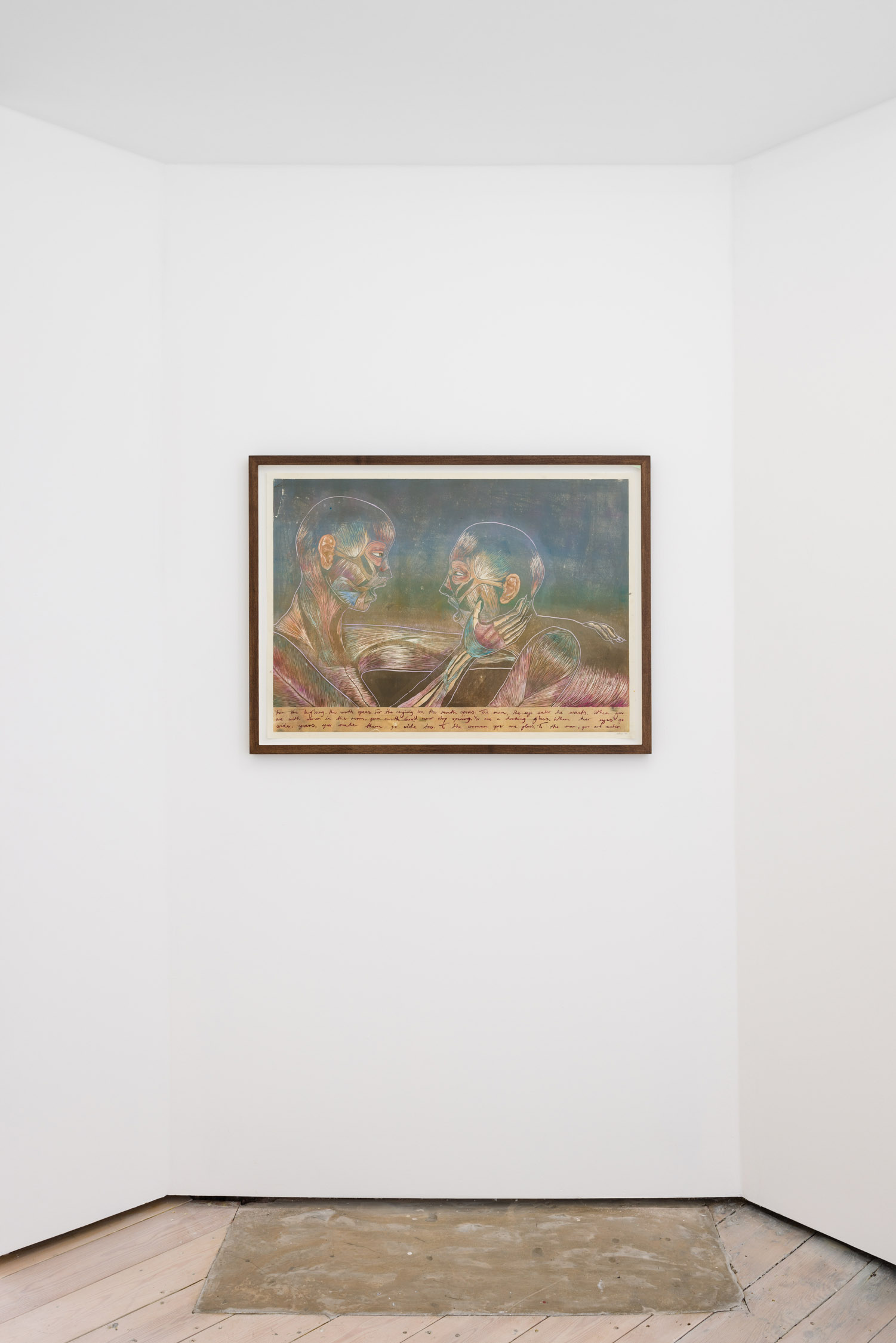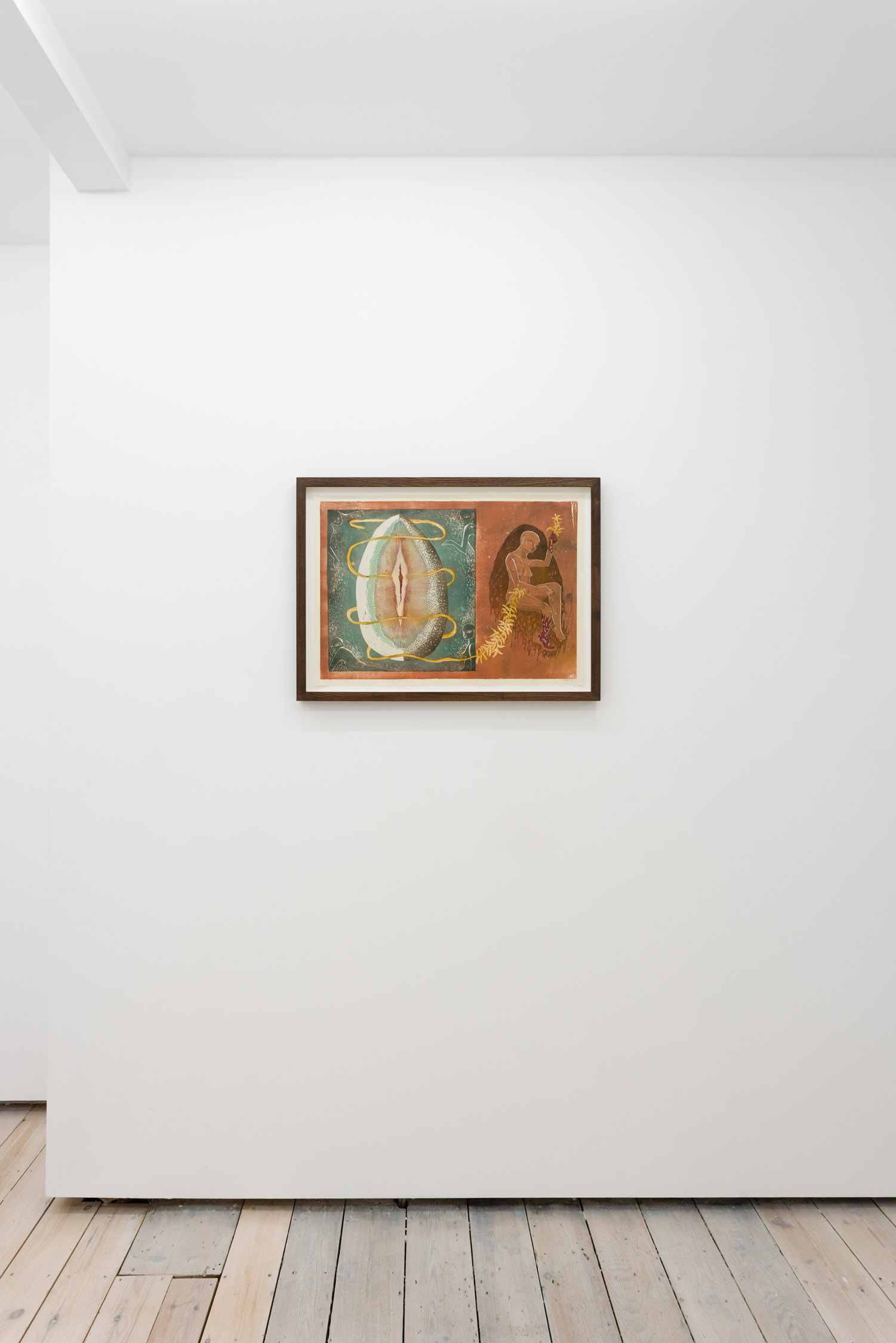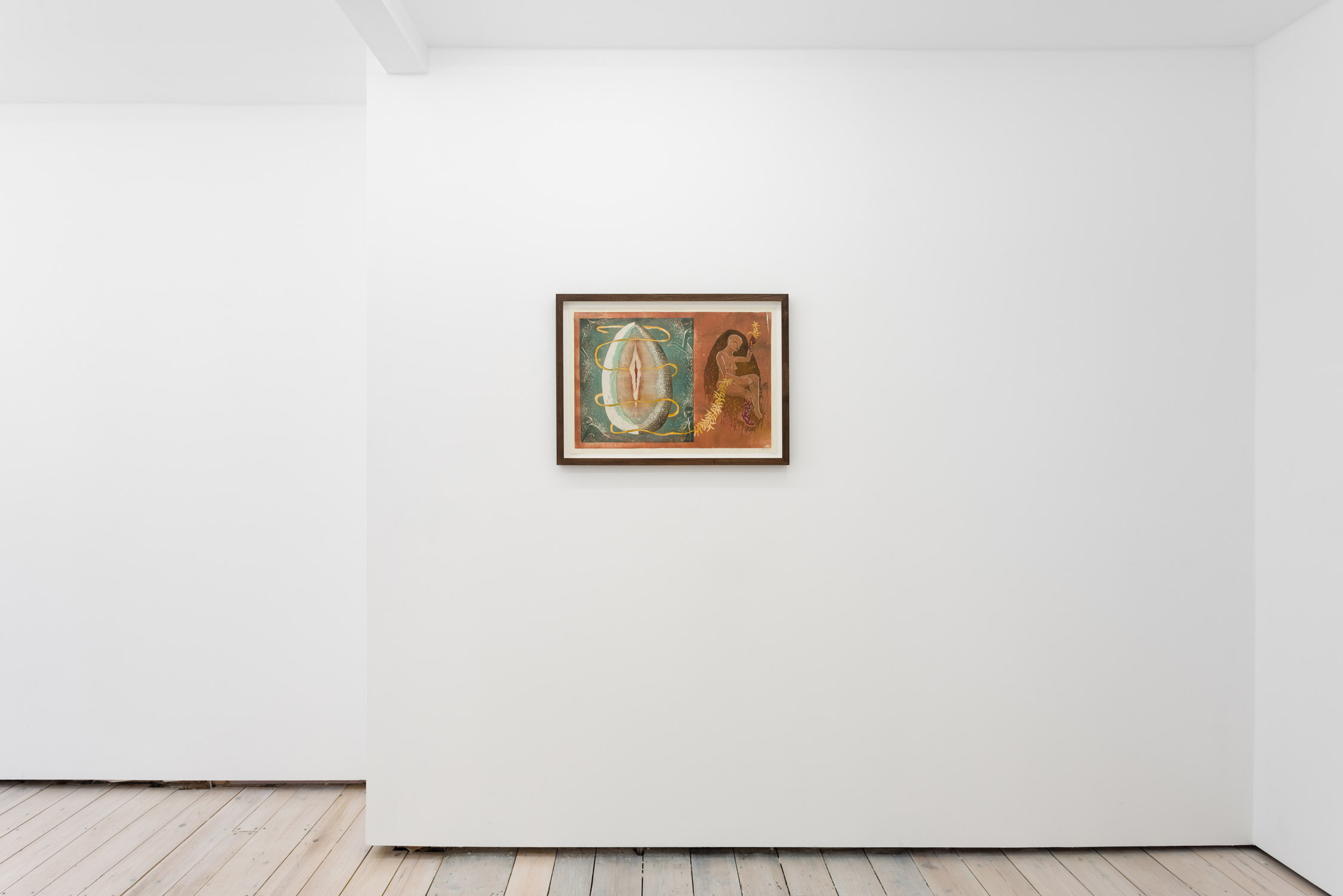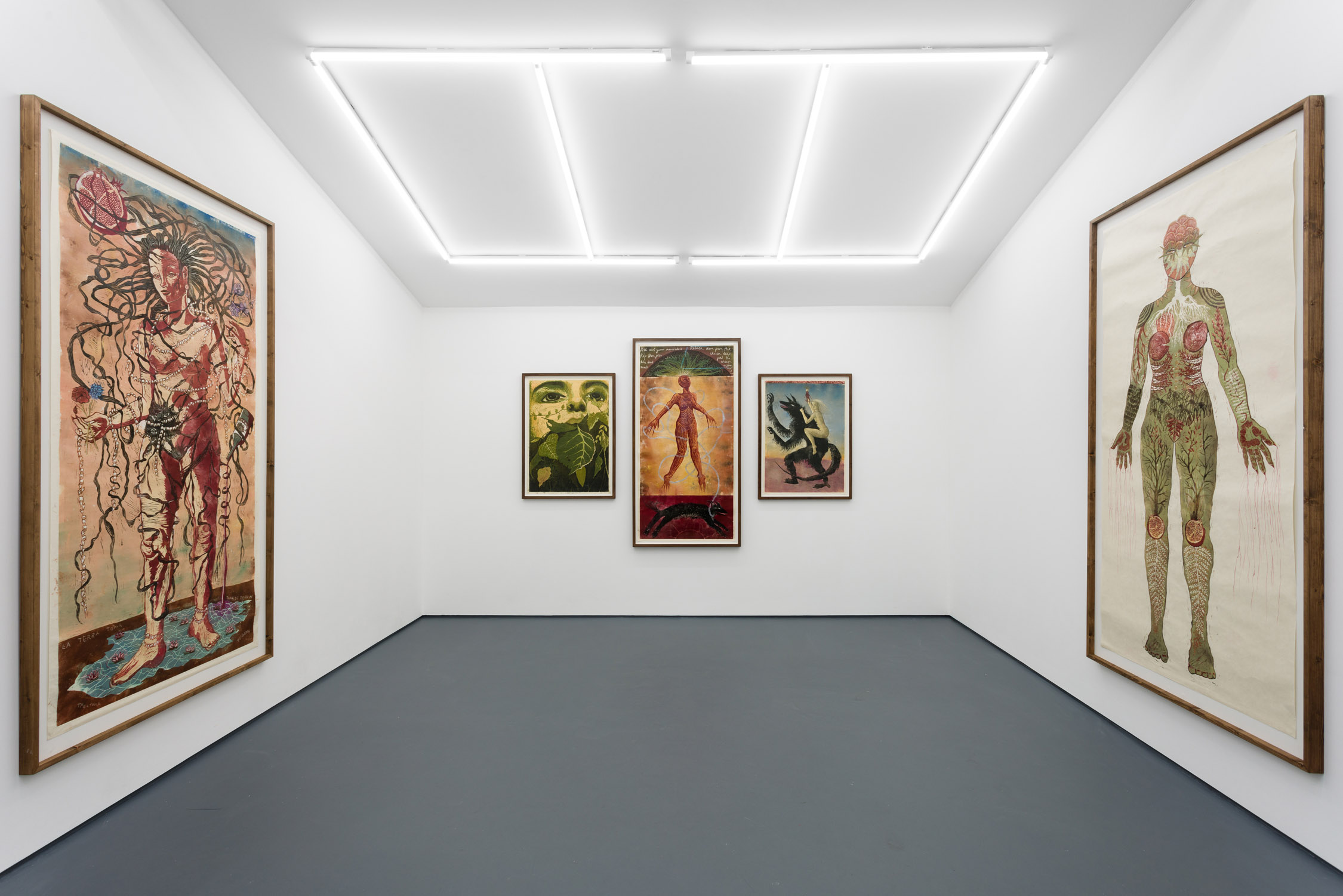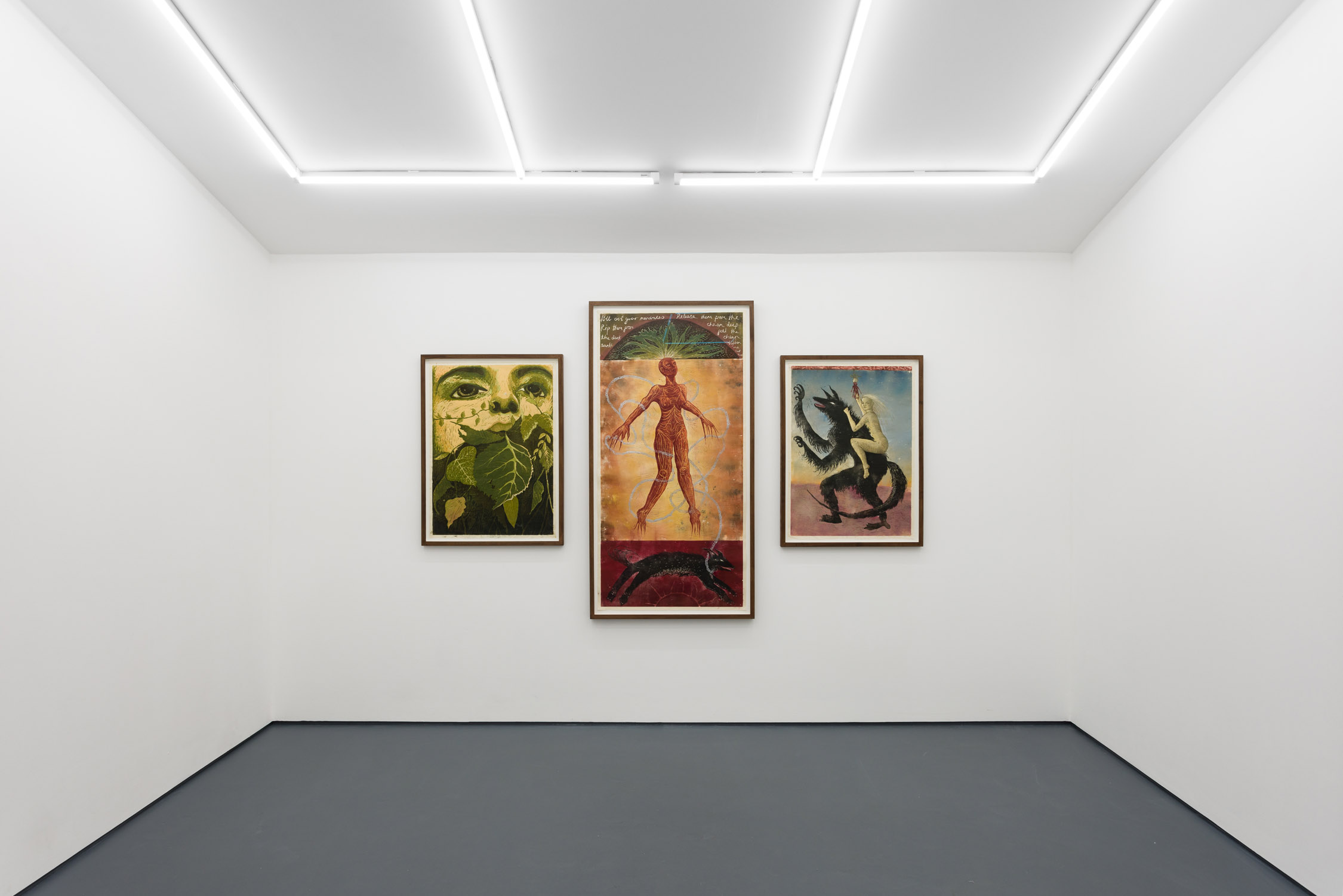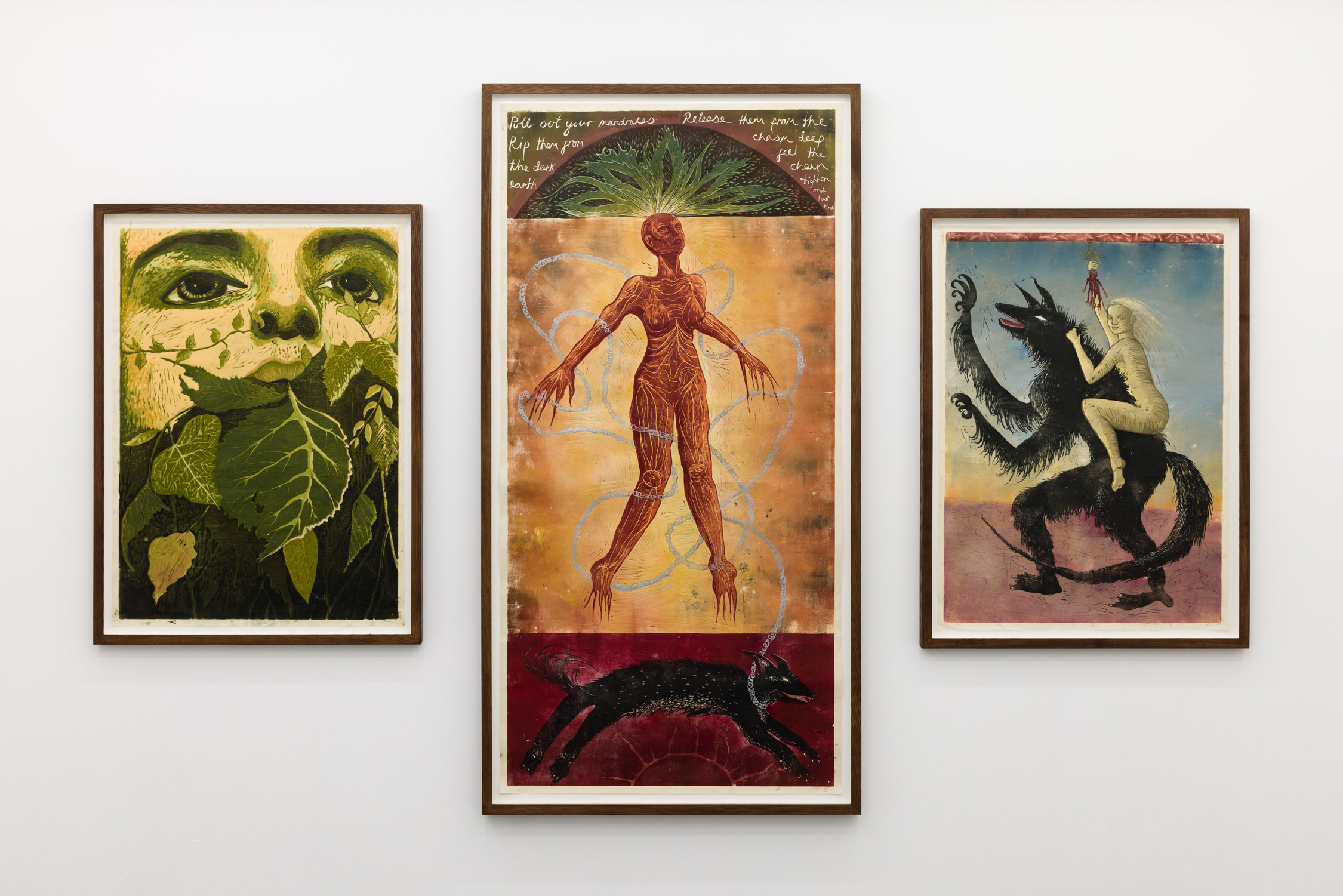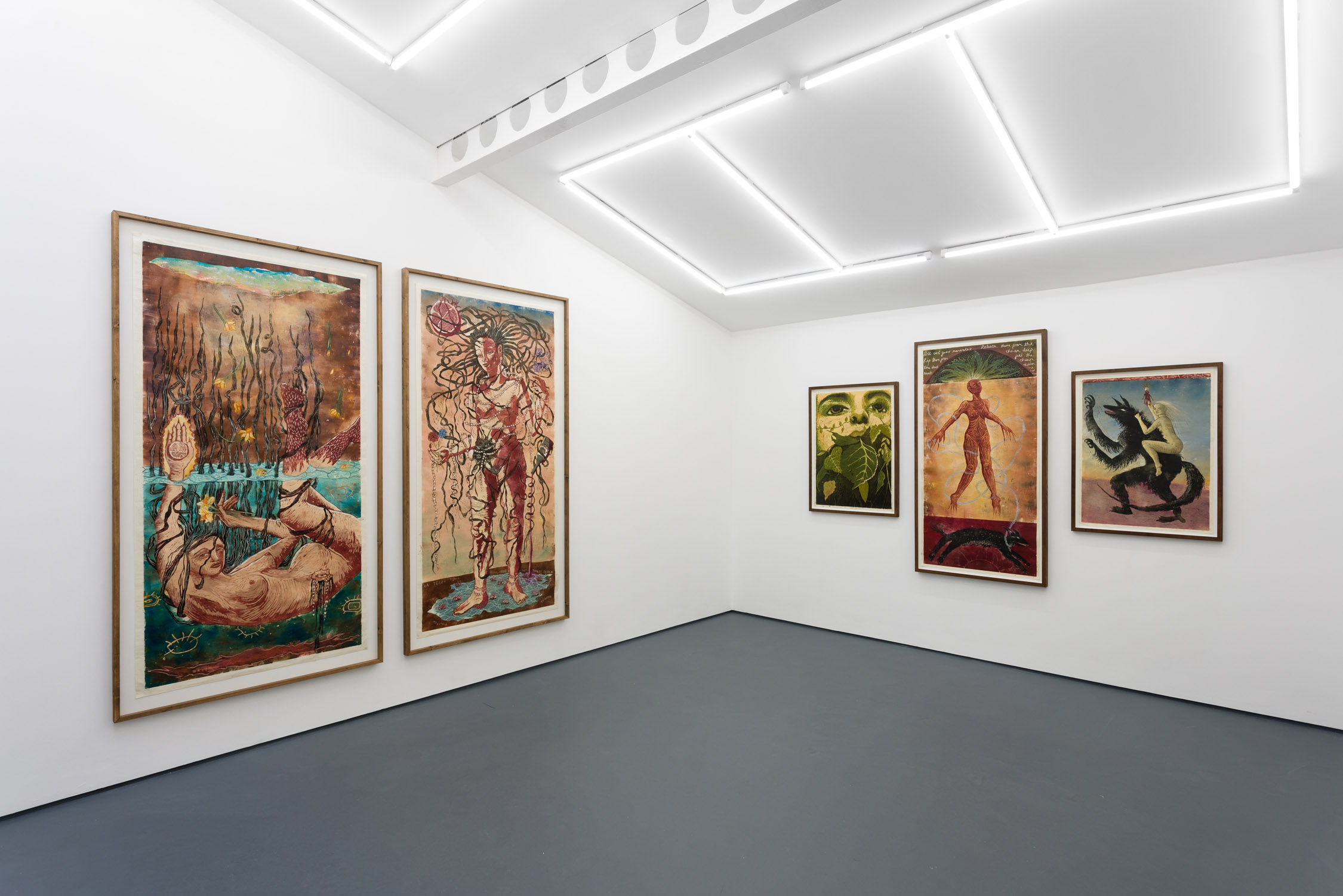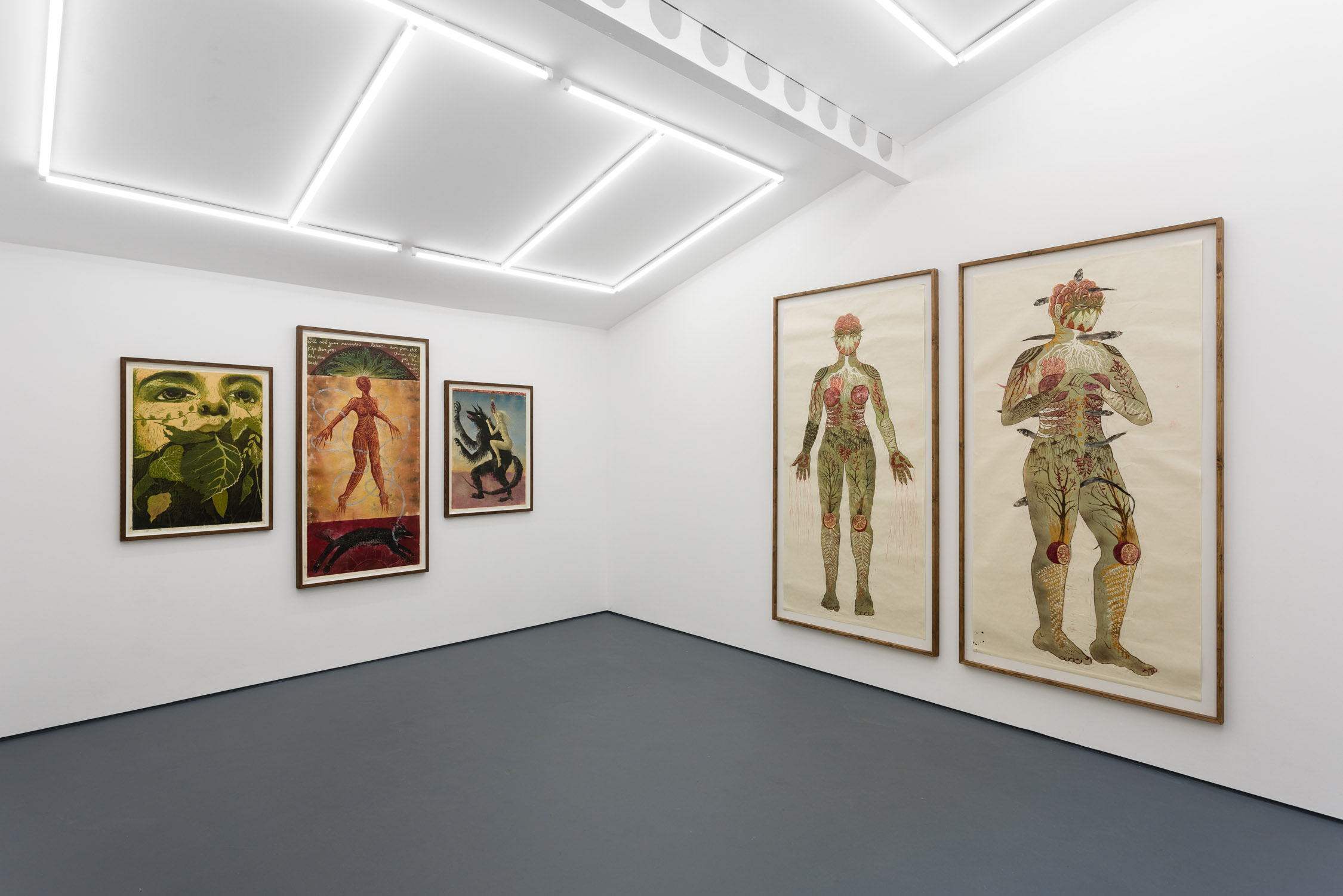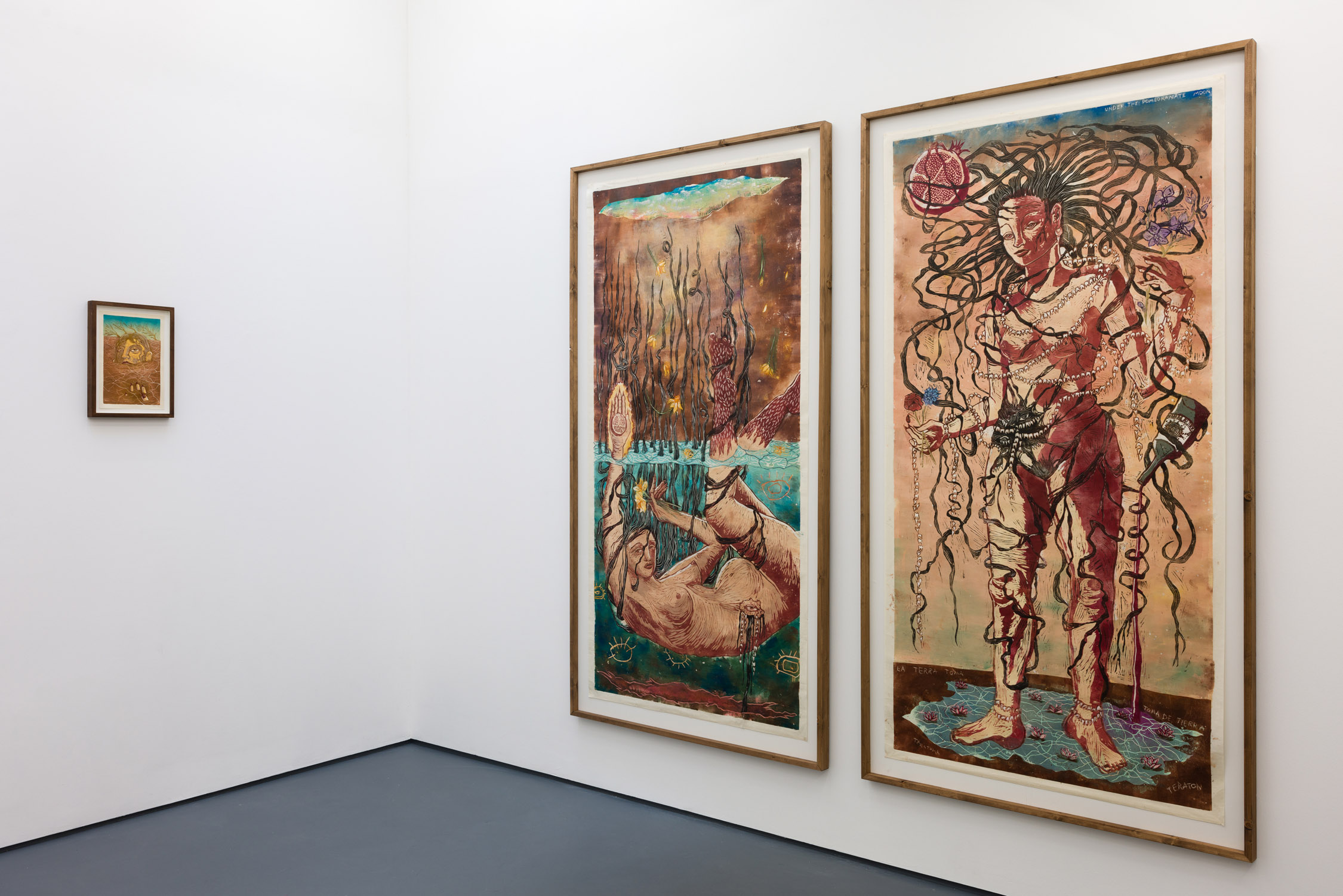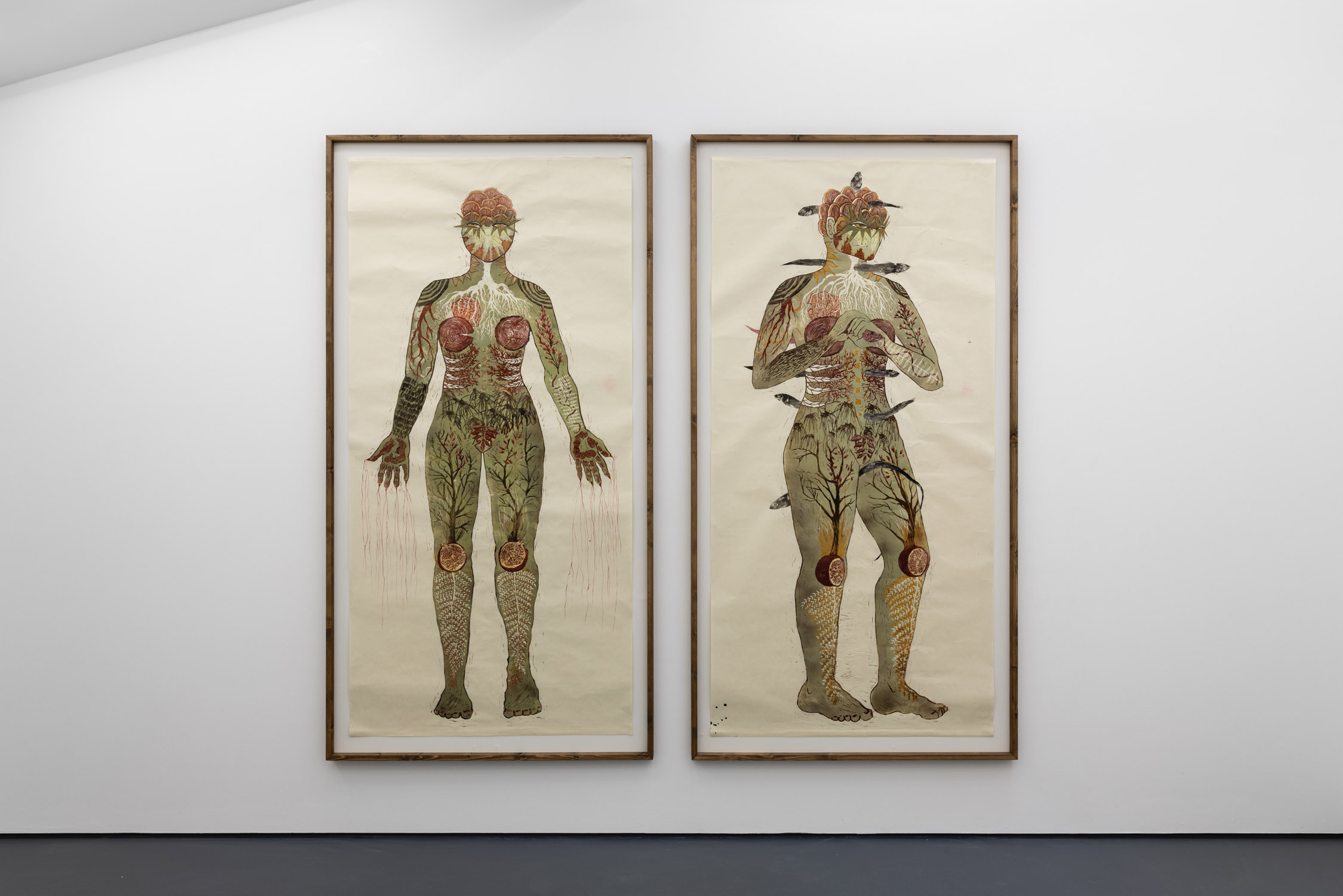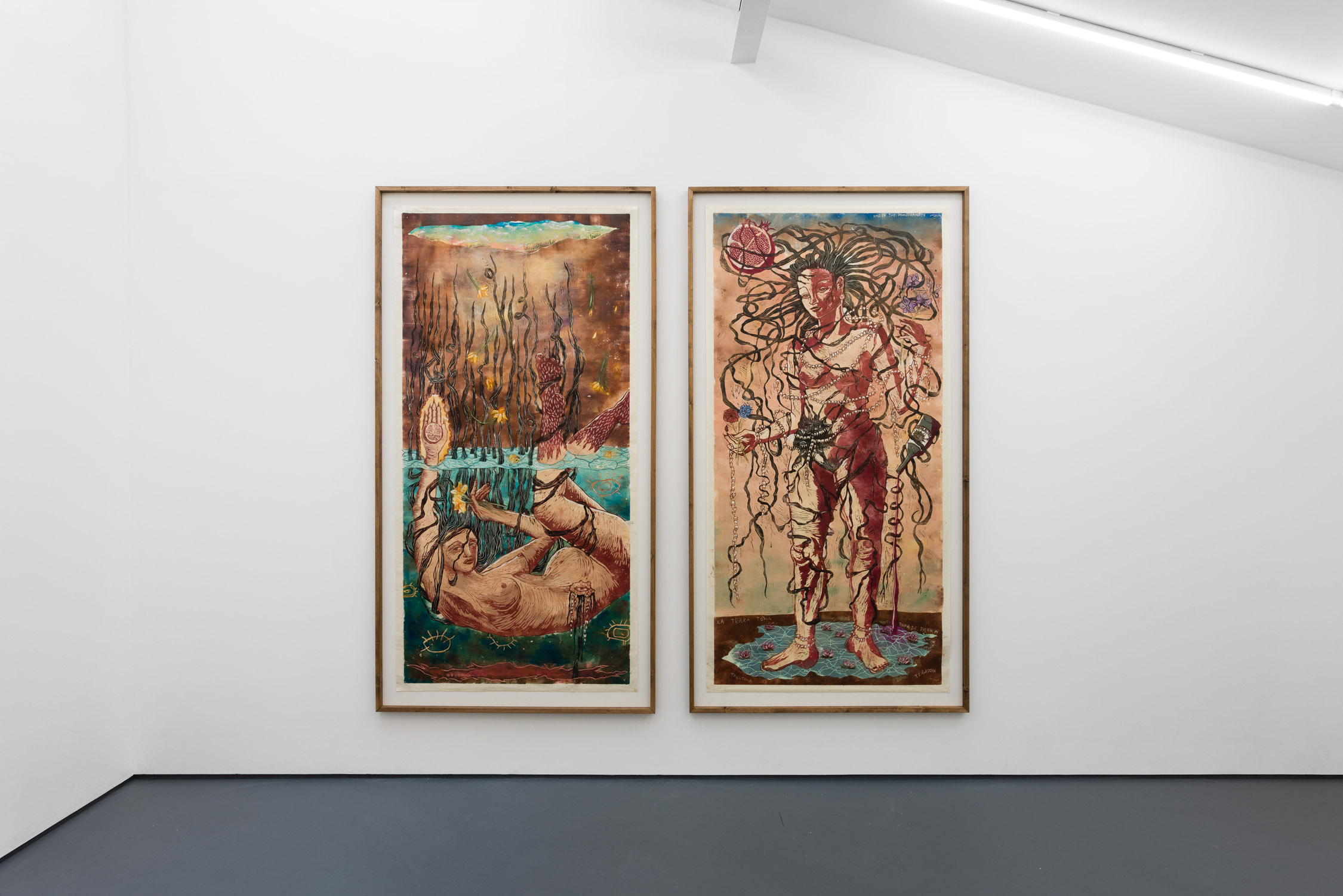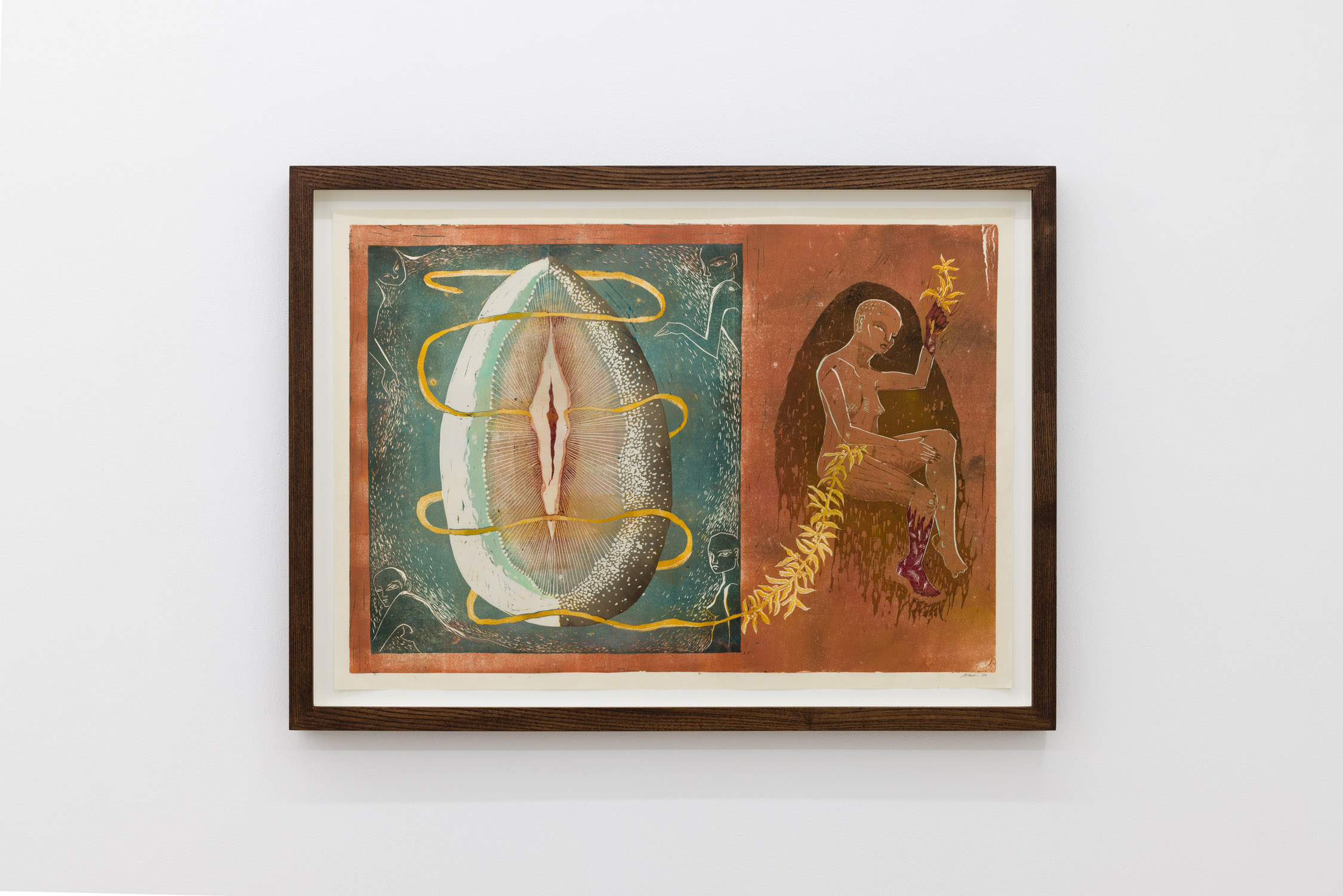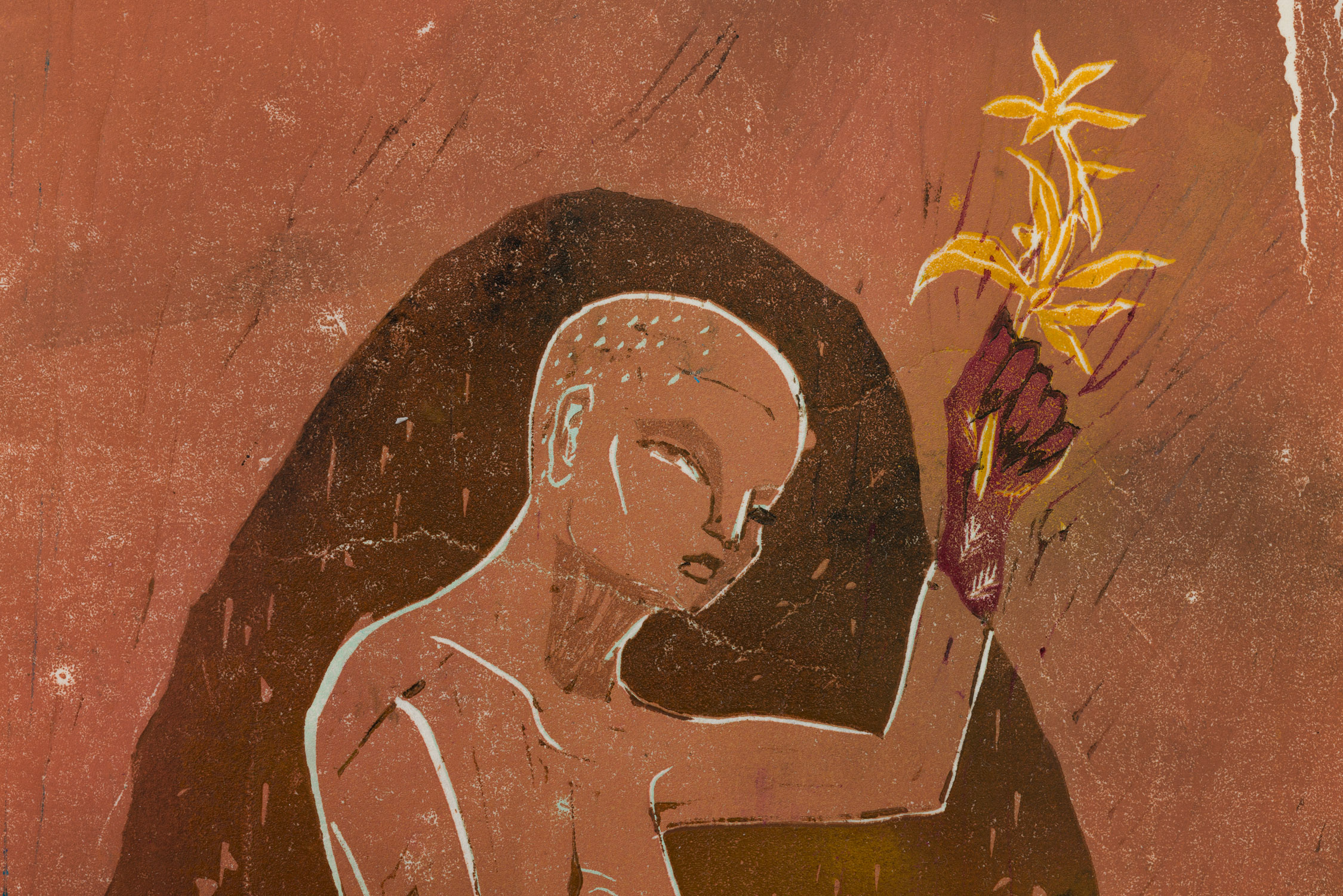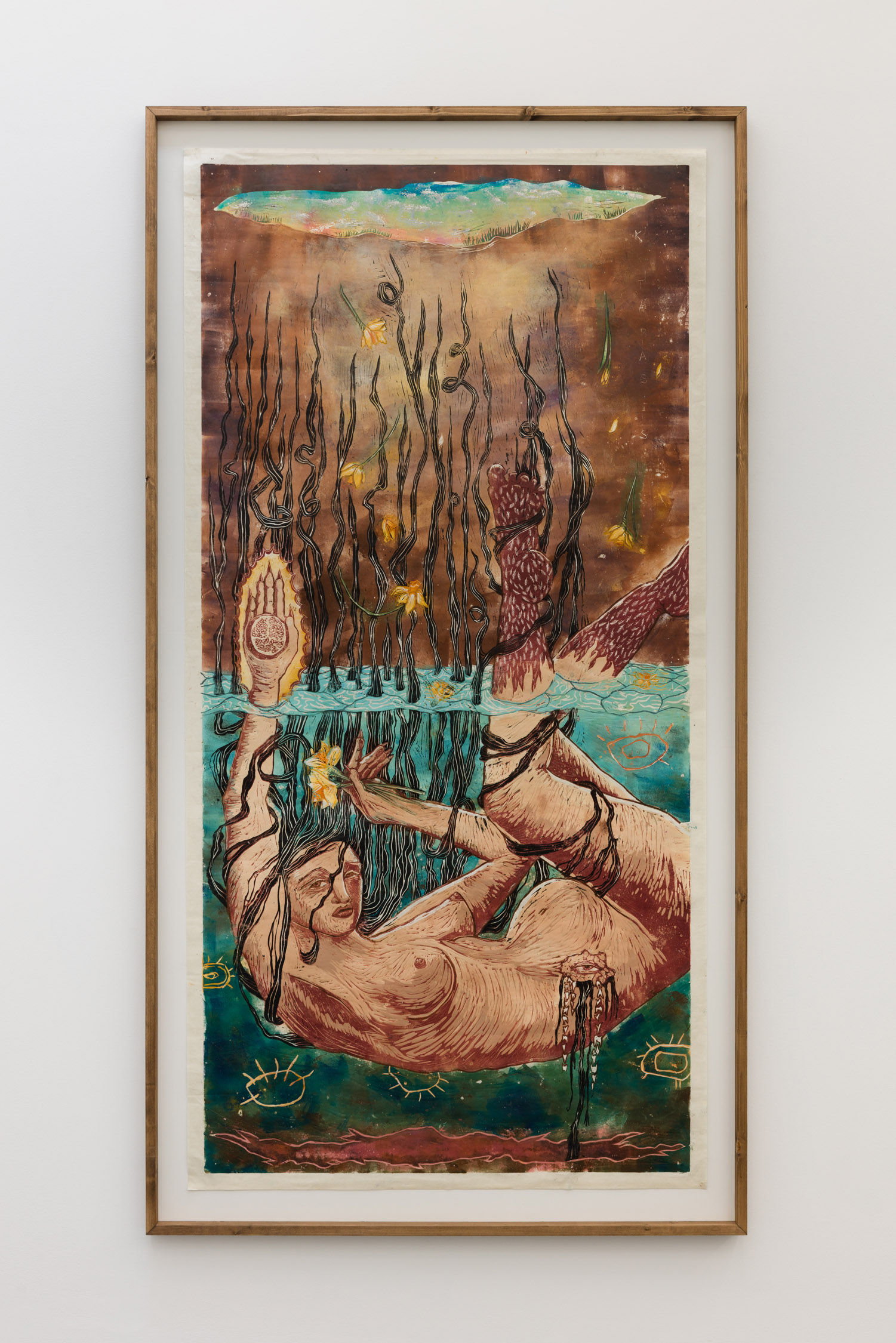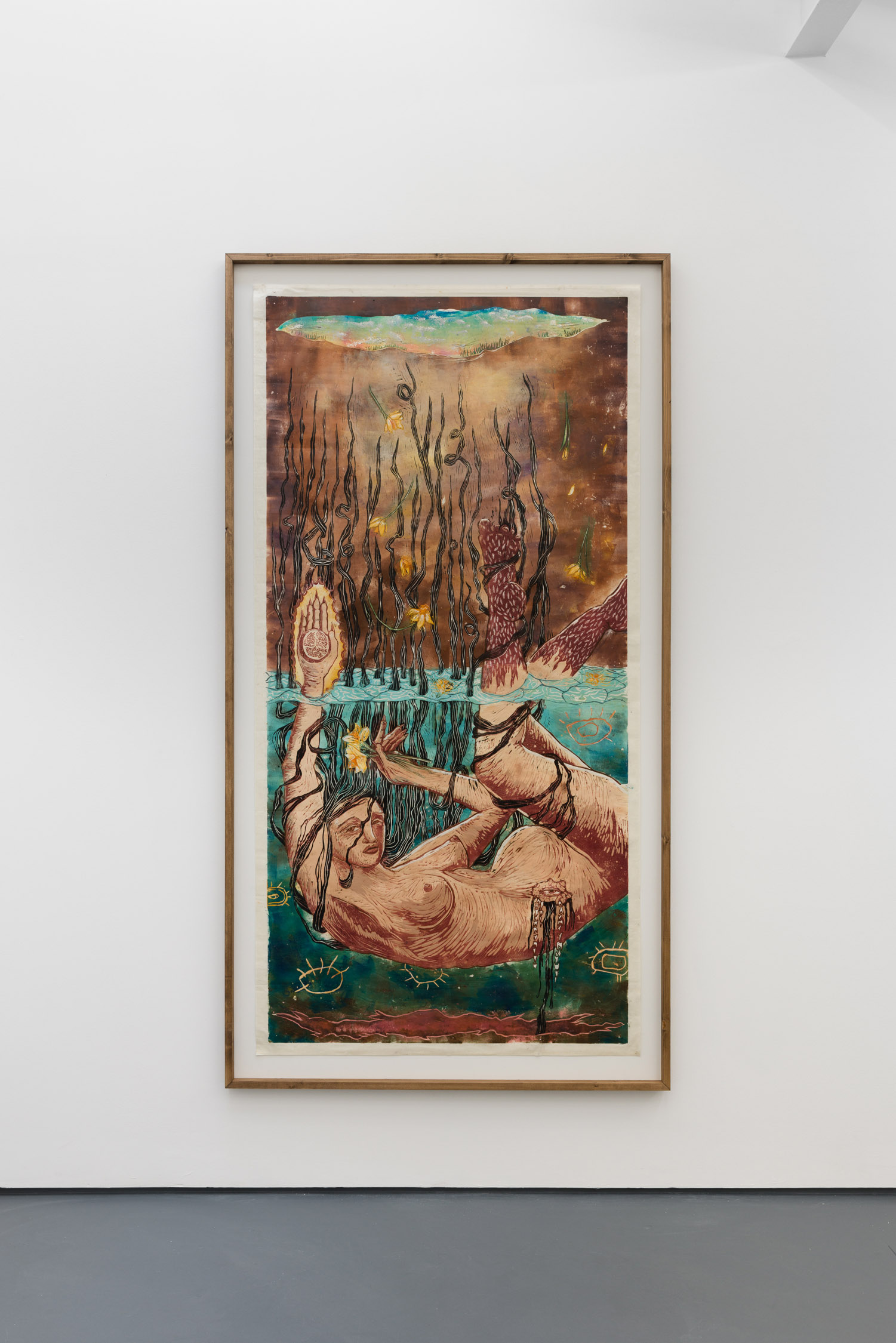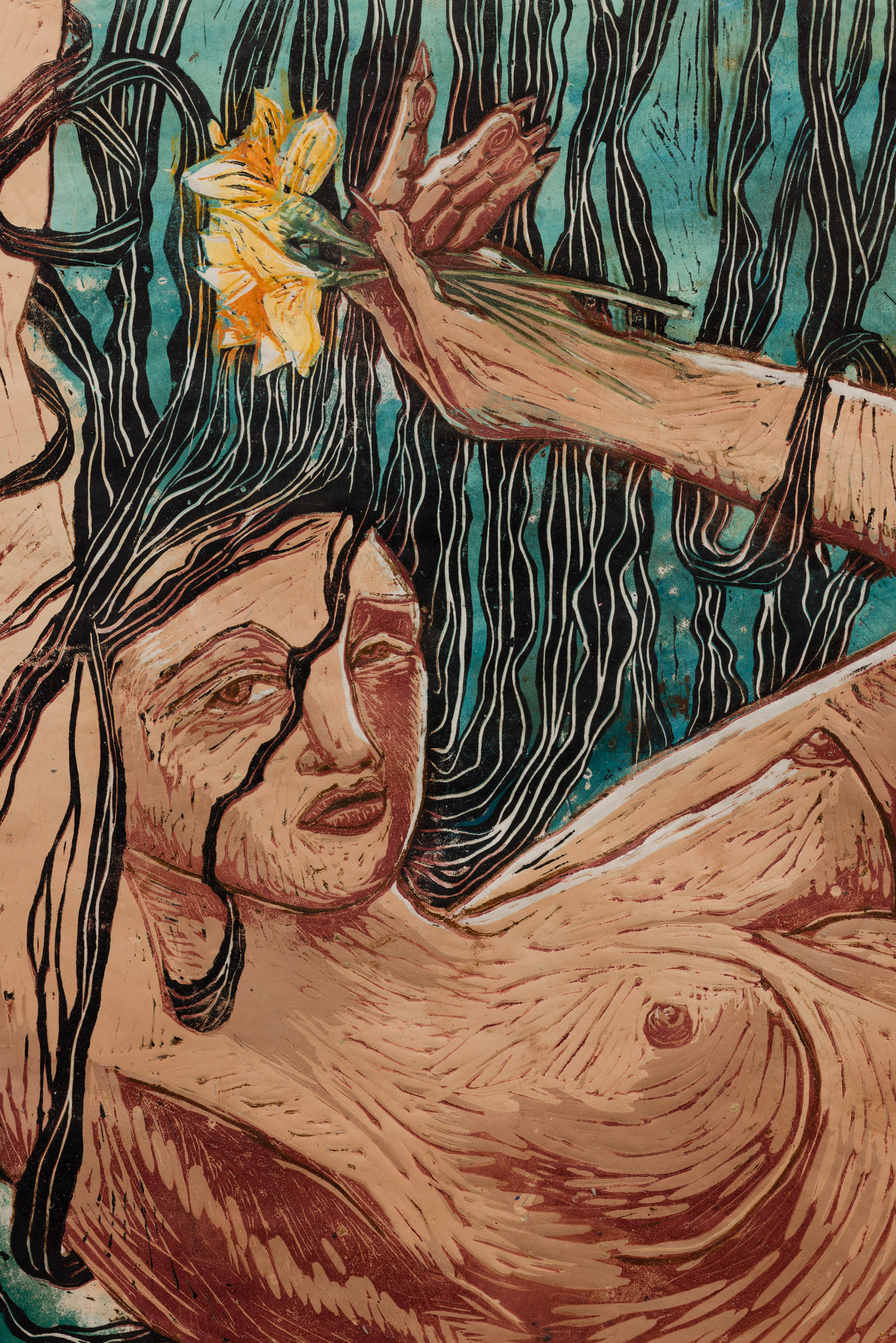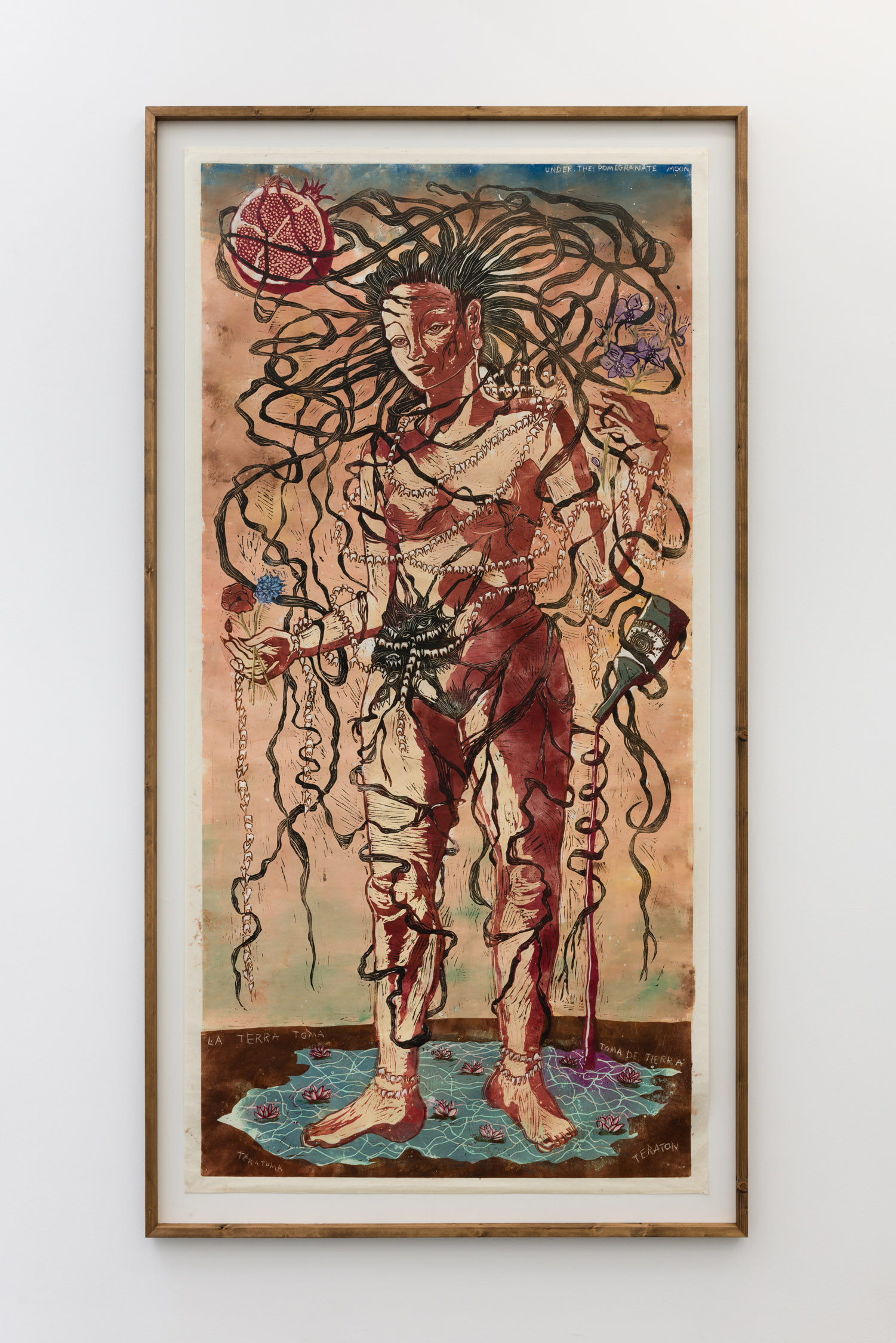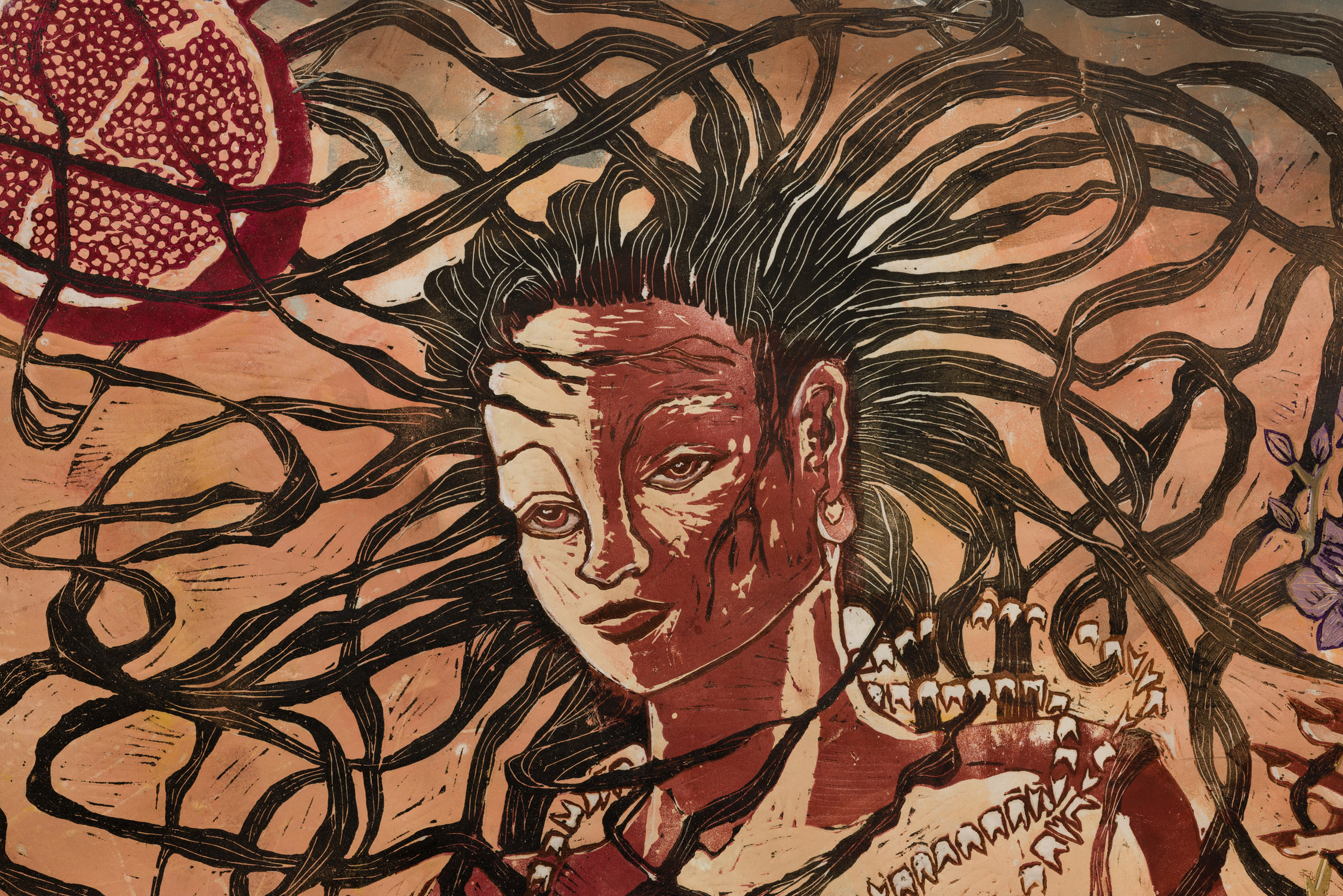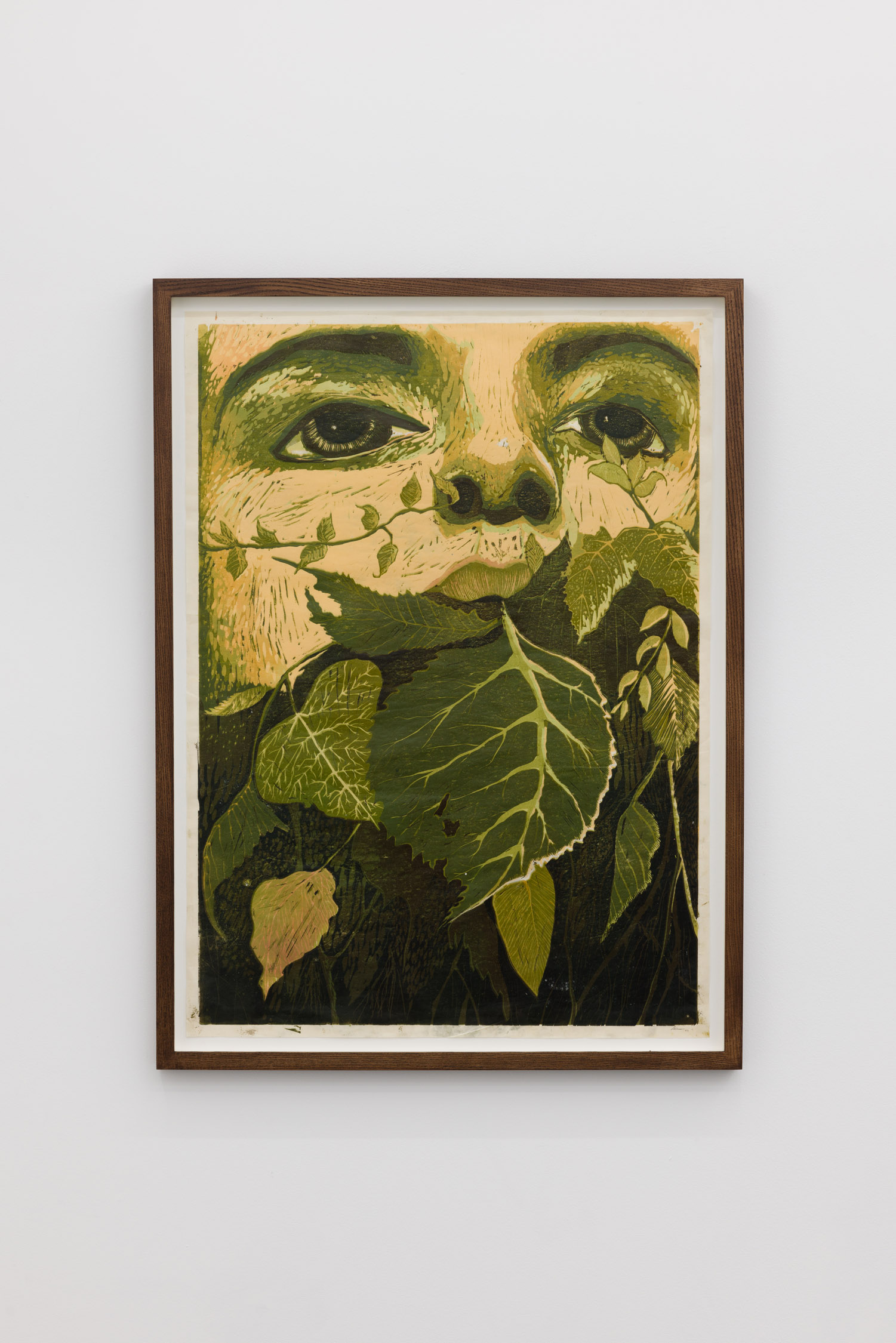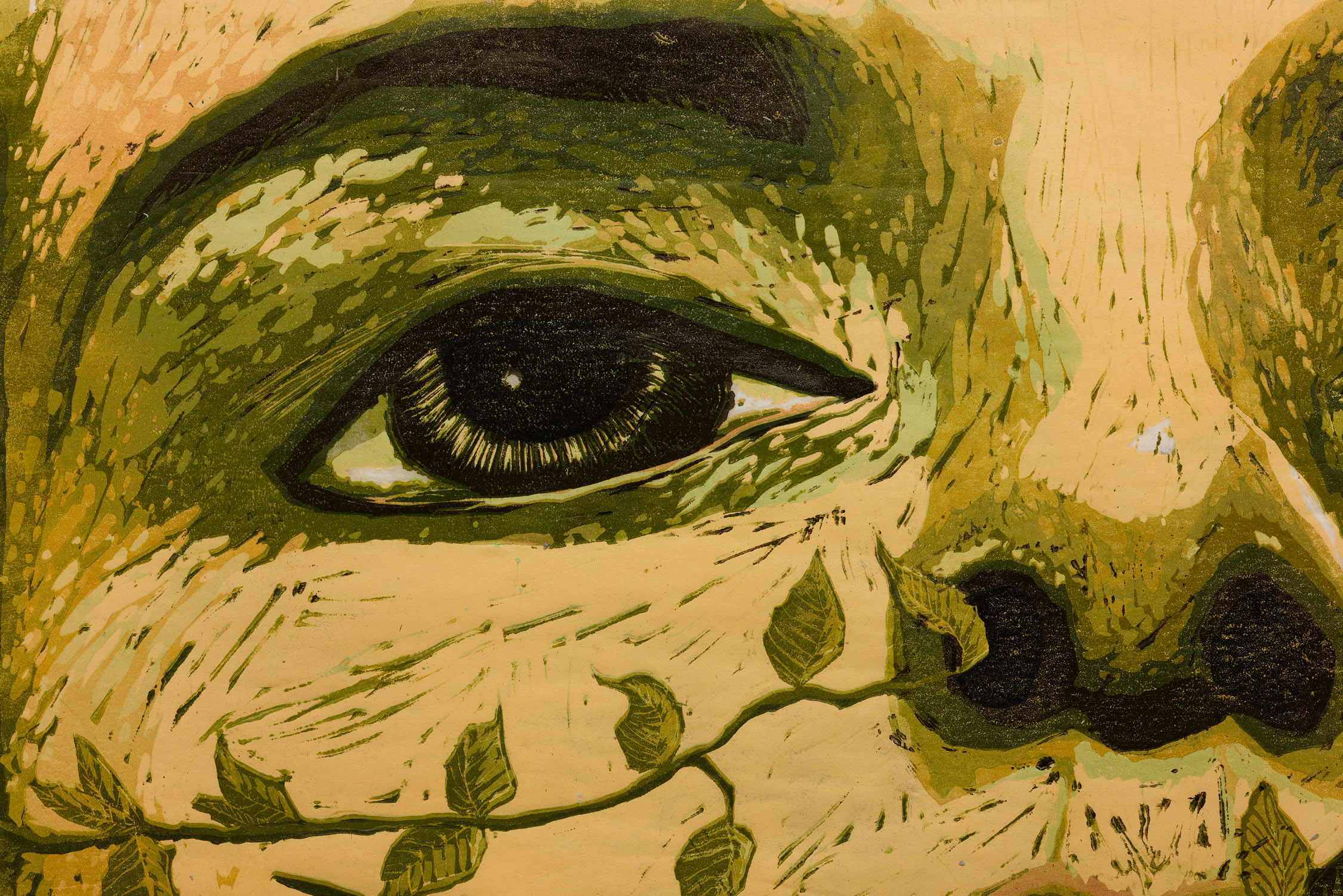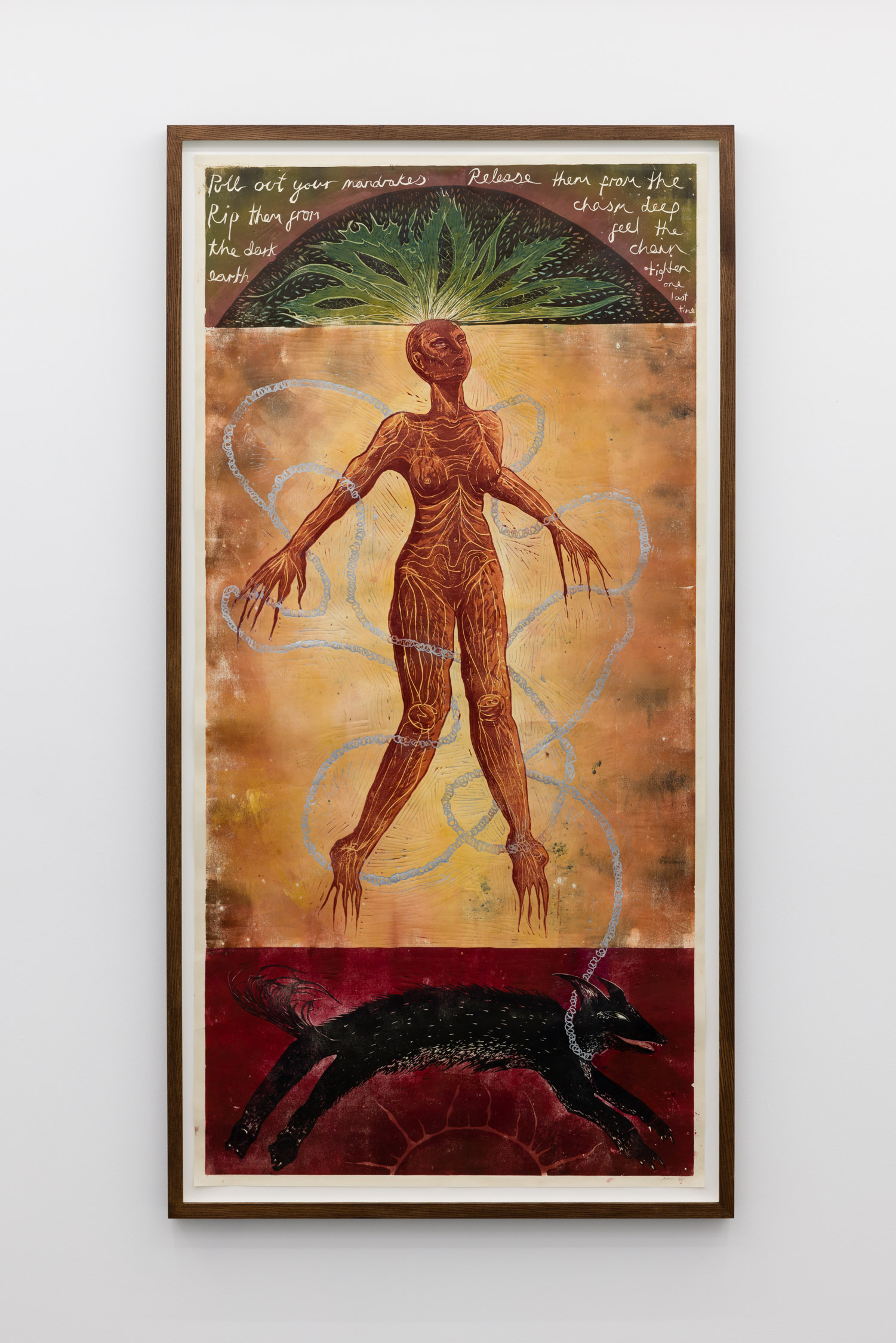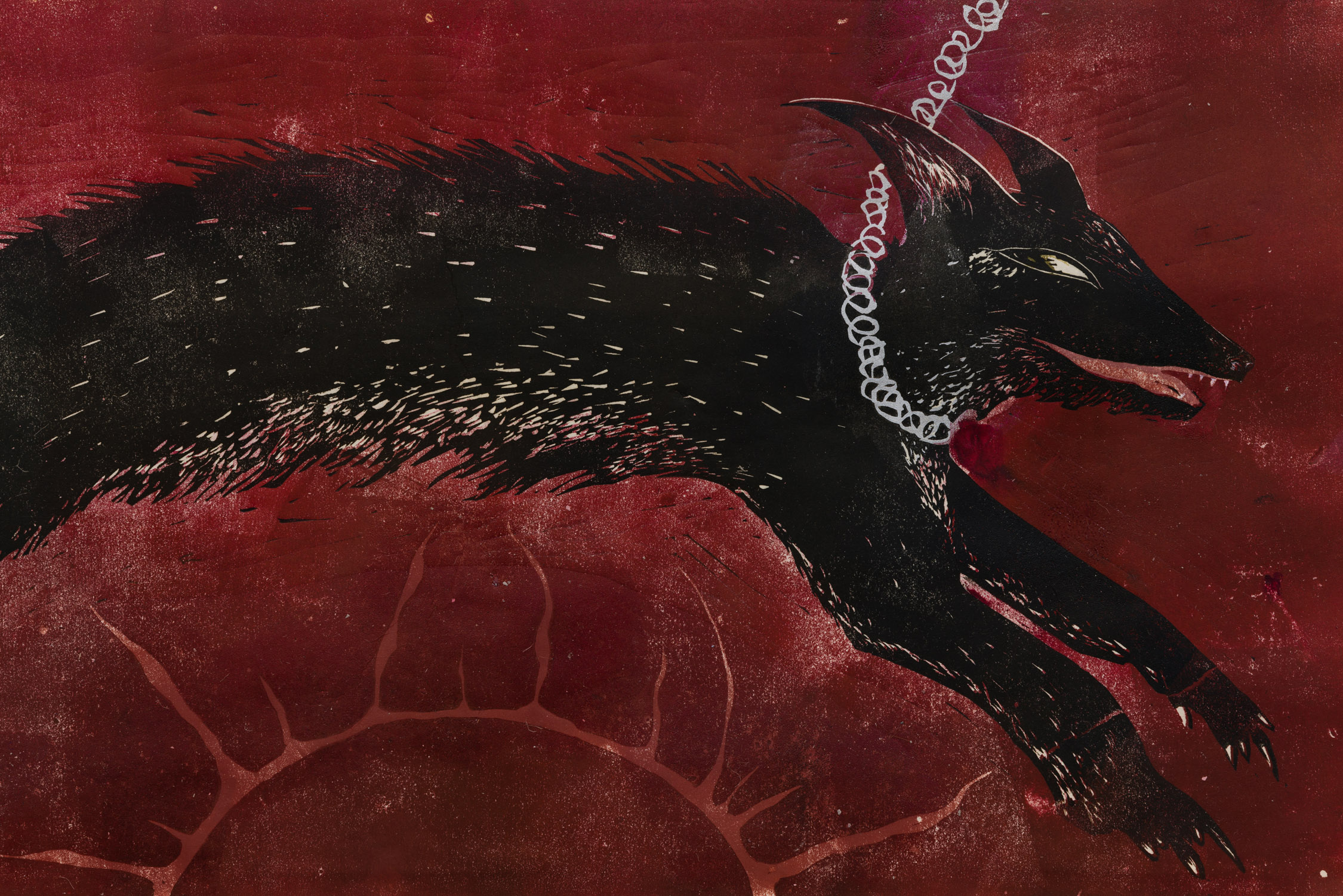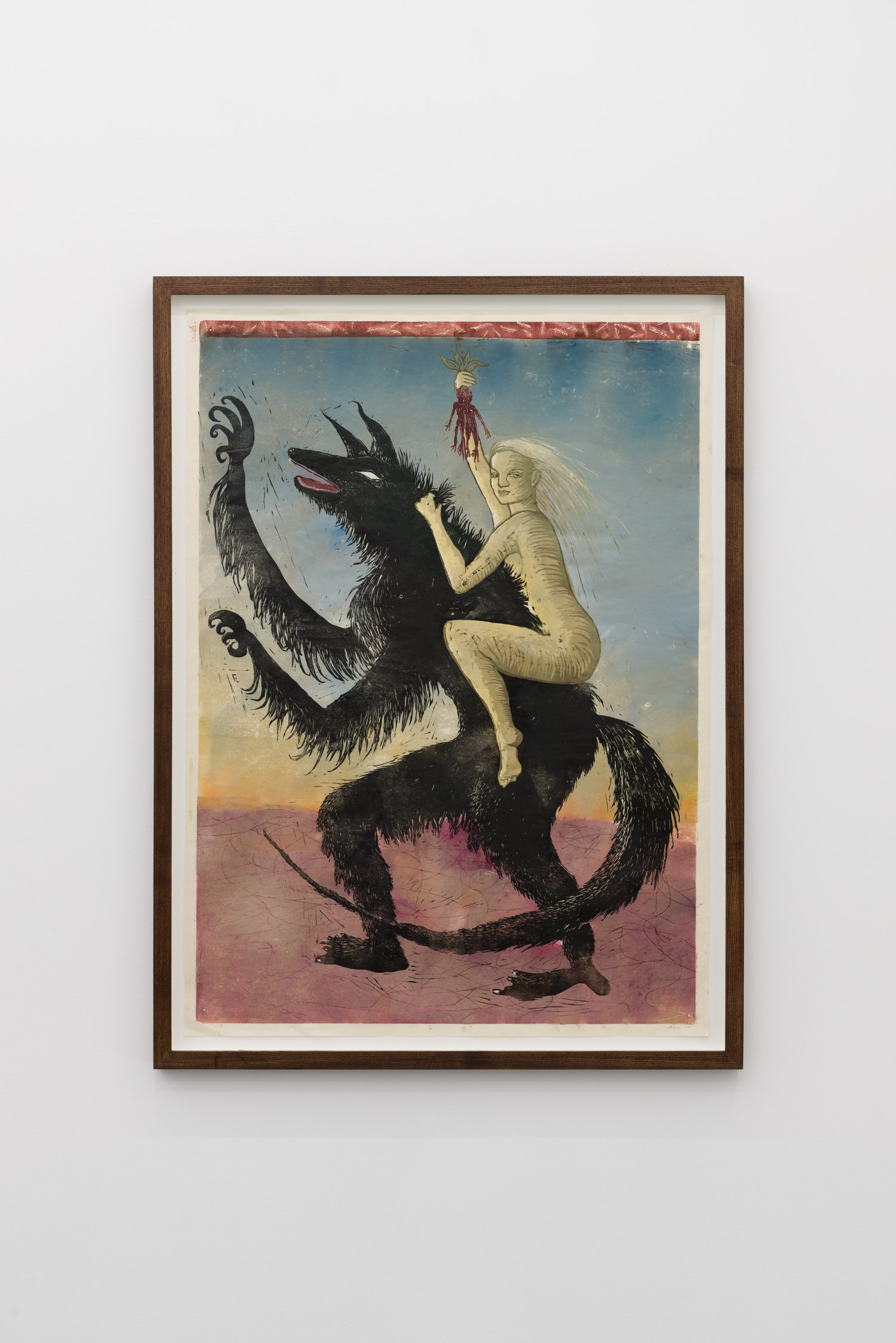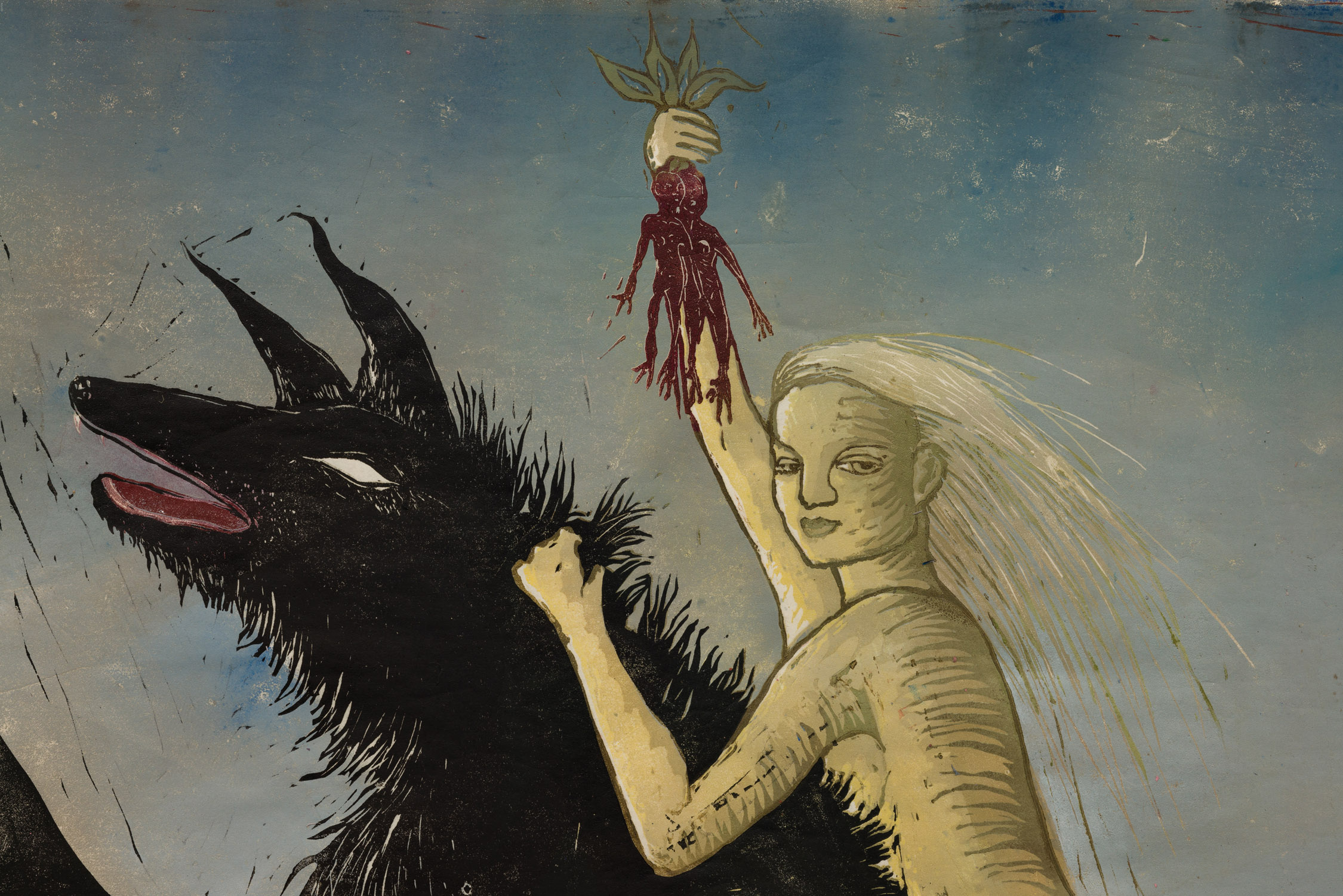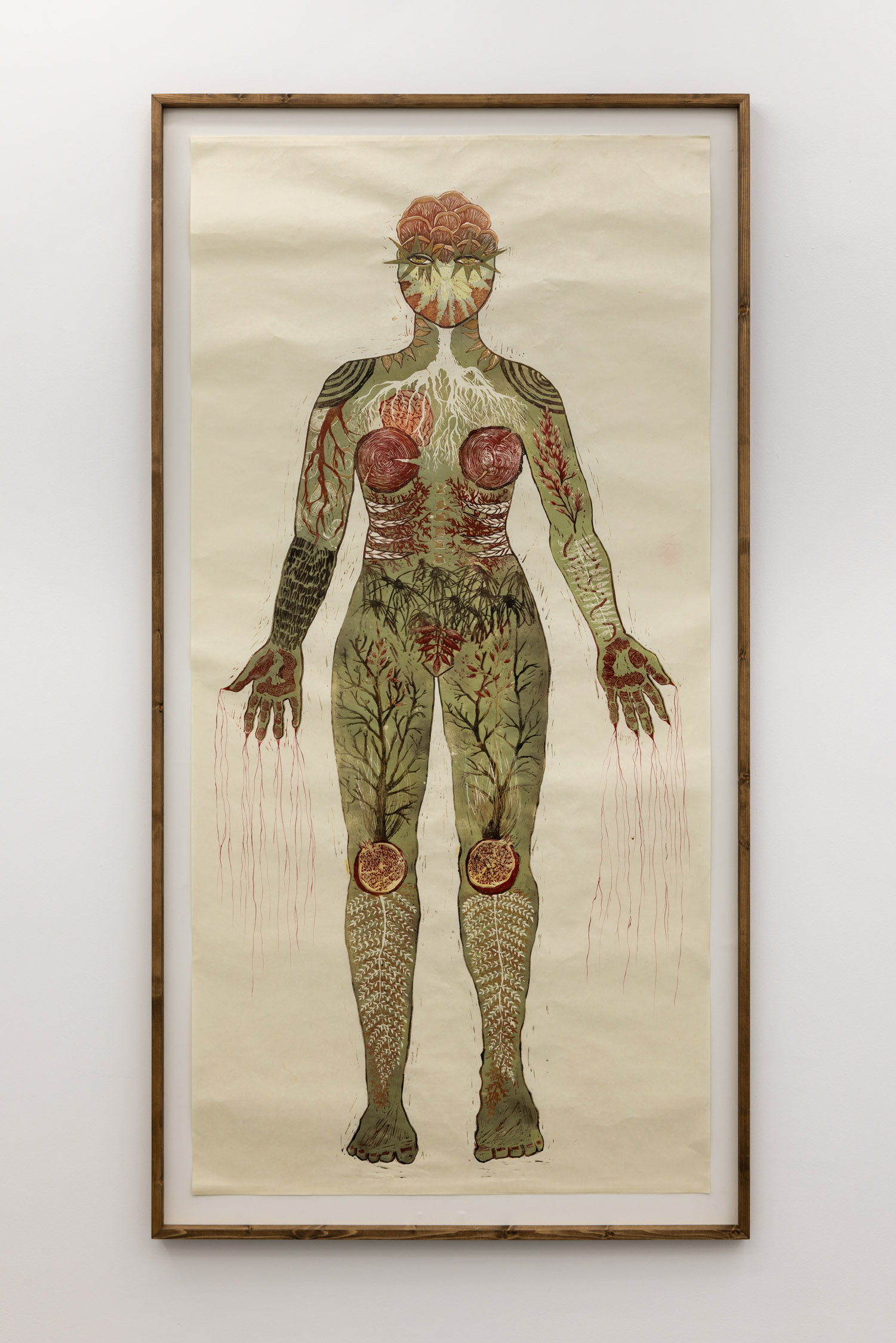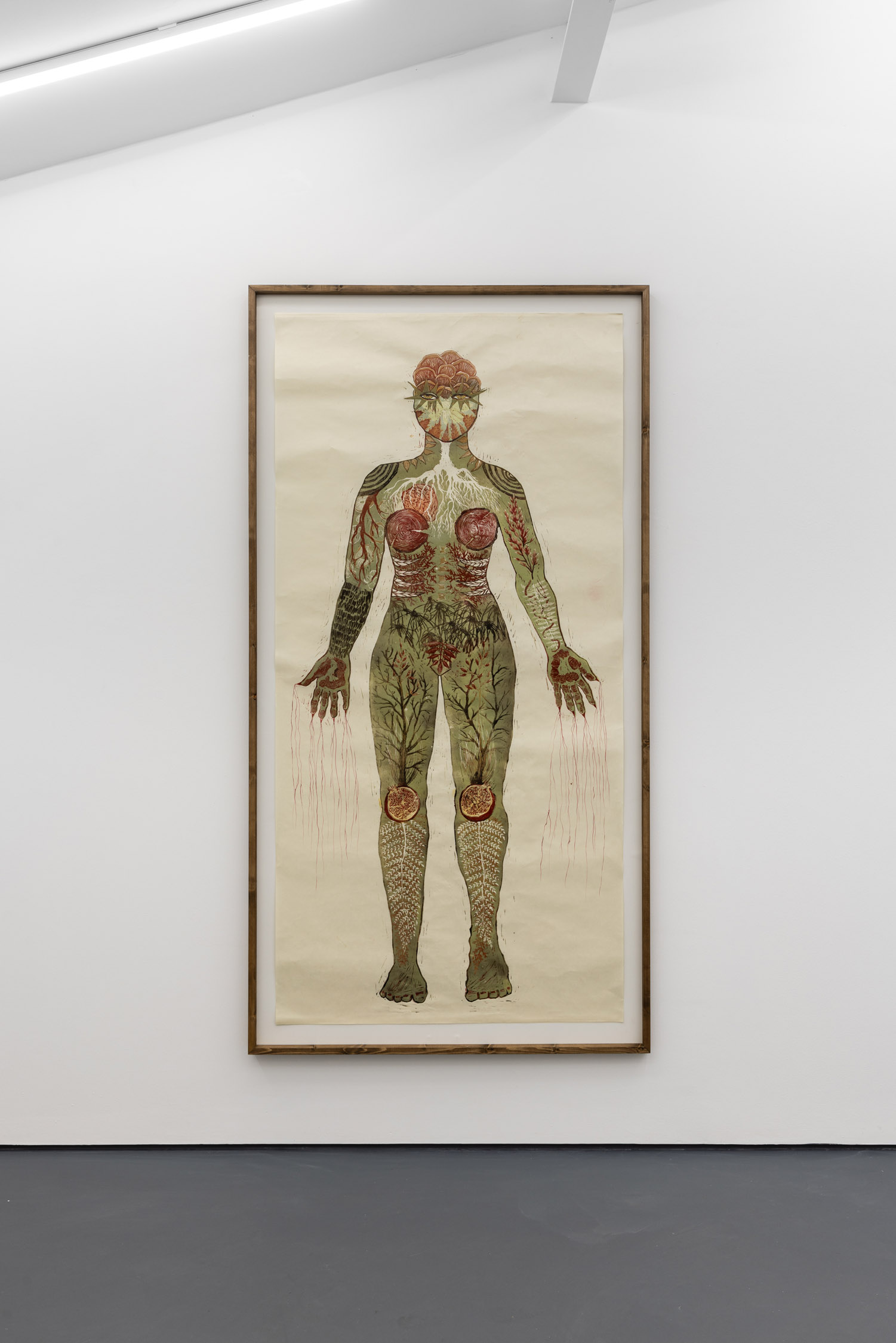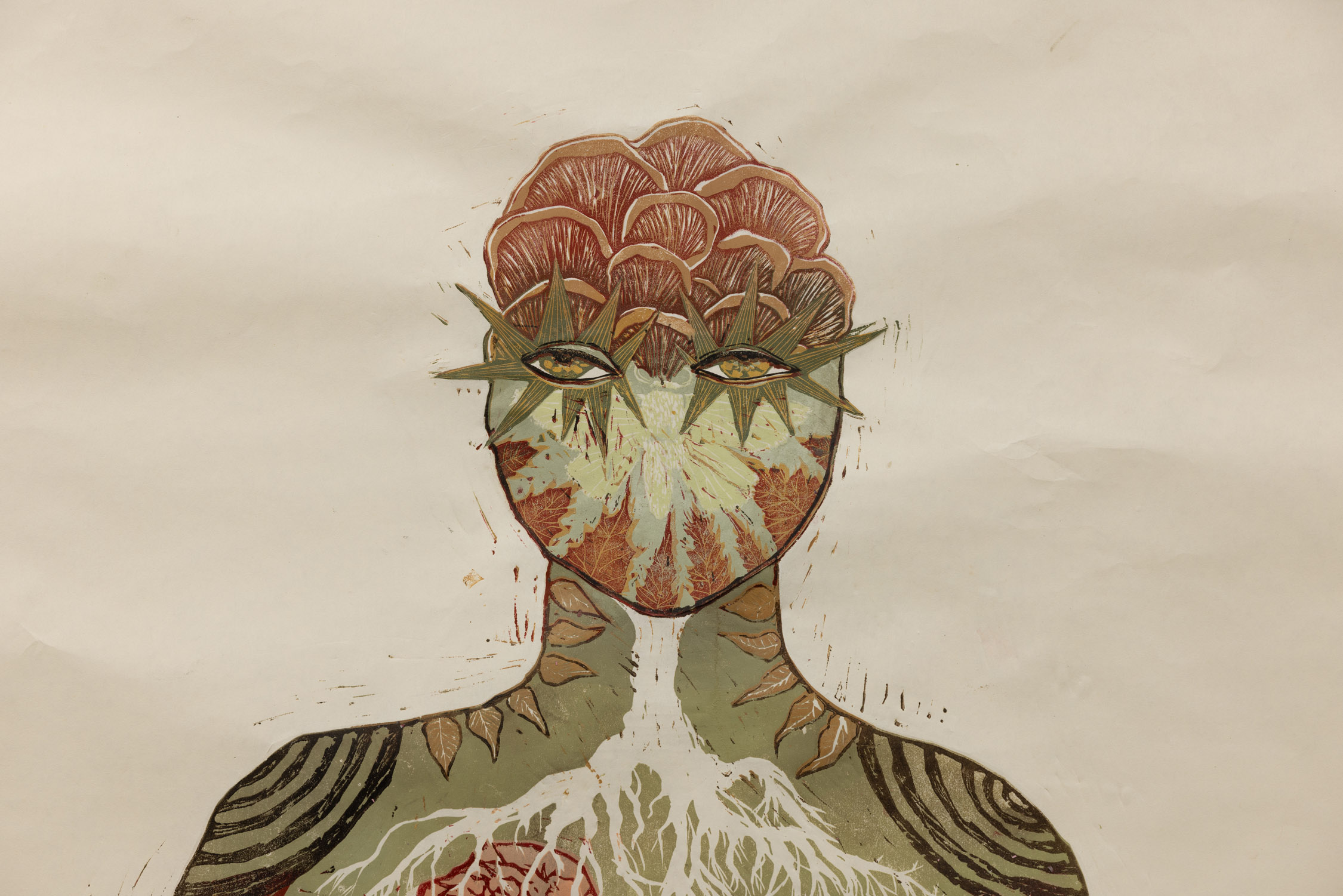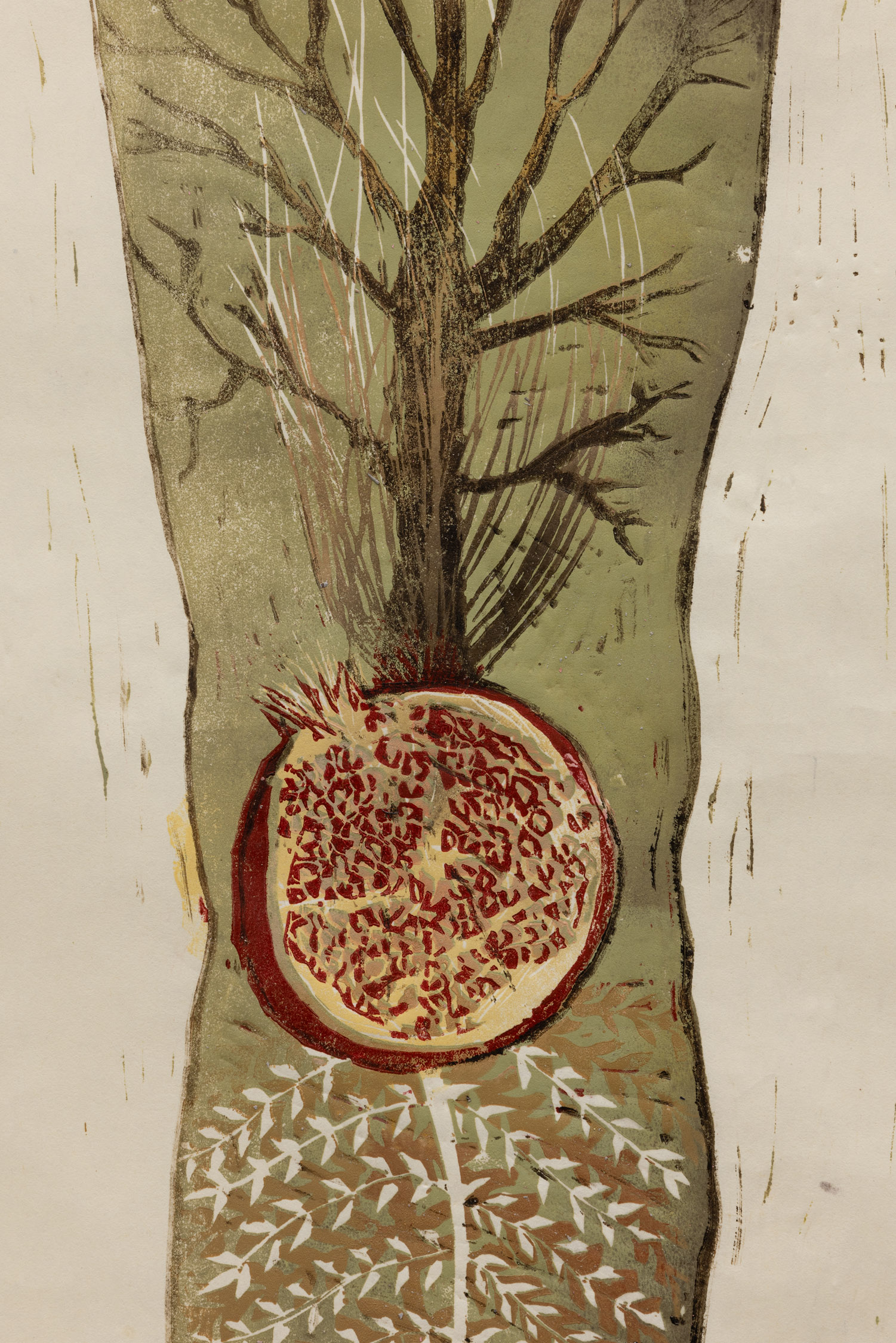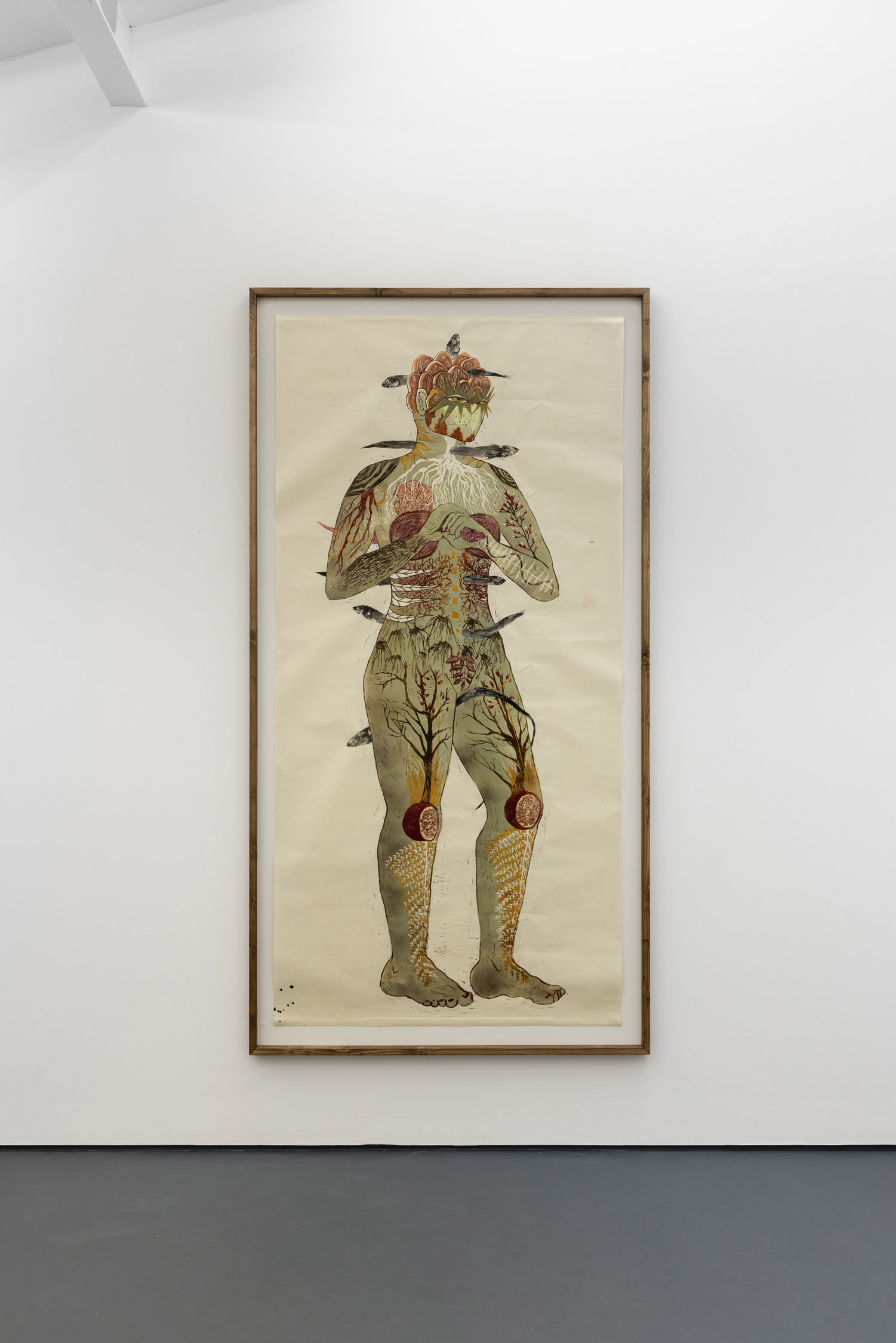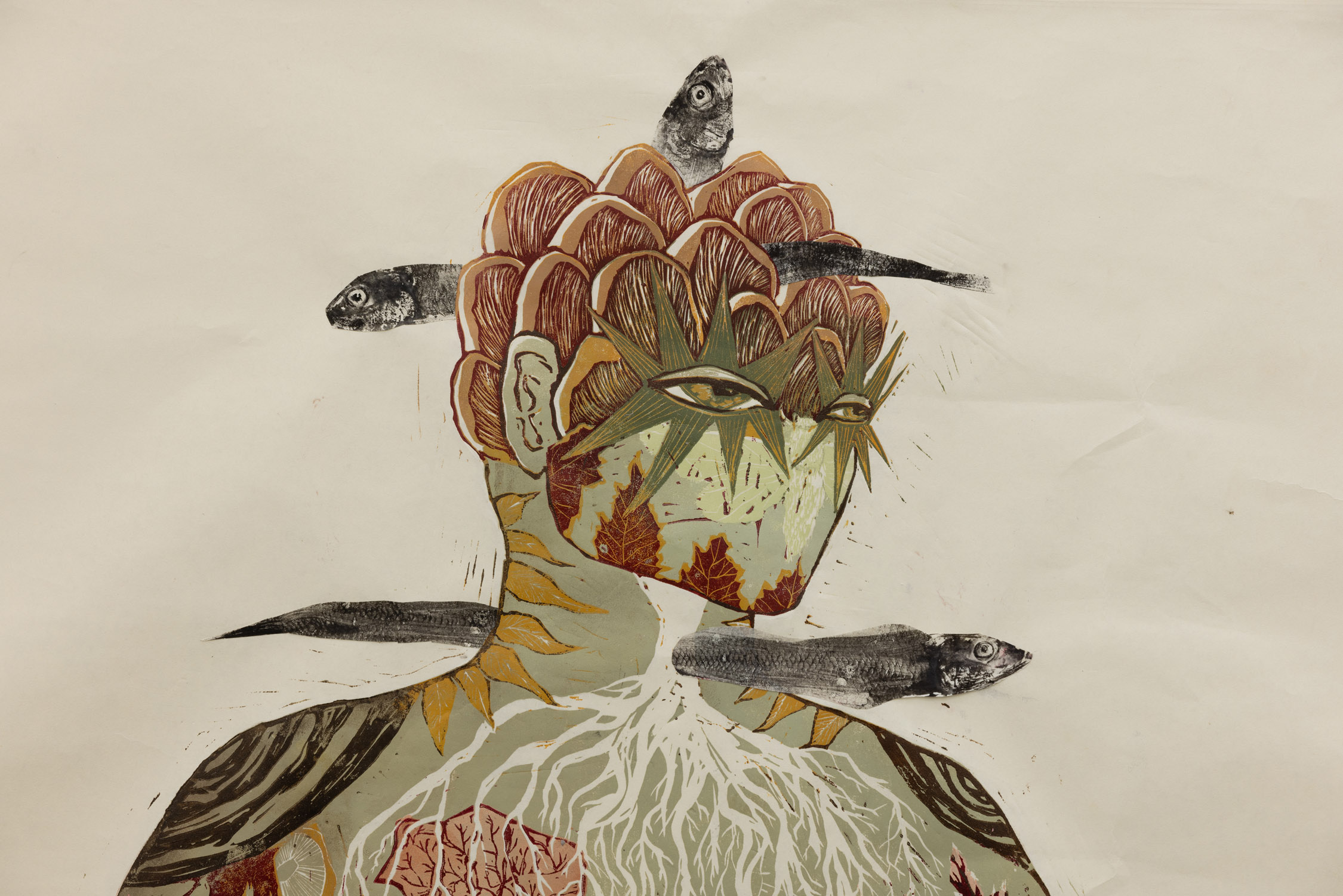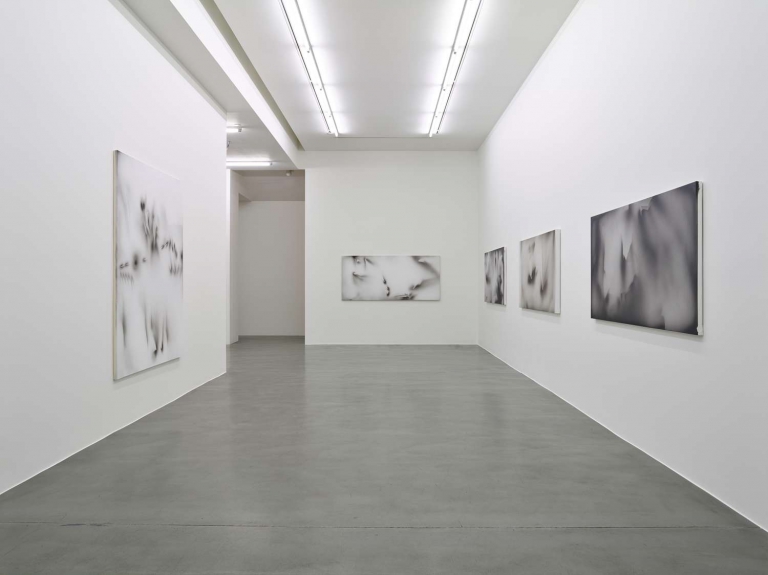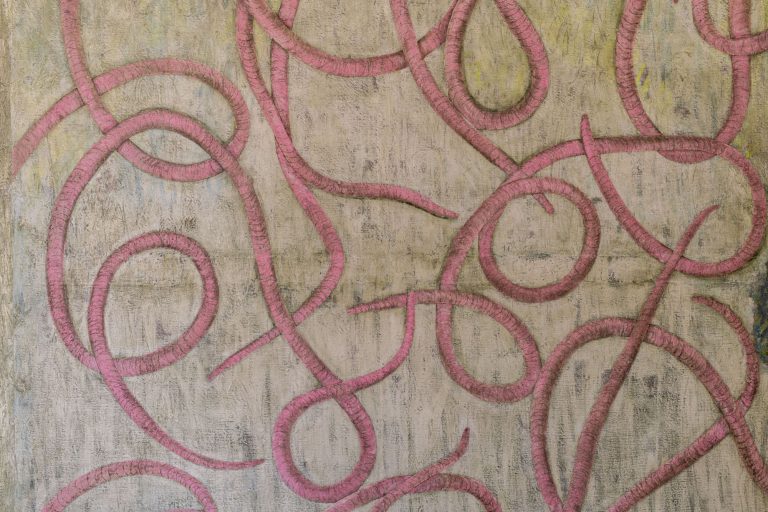Artist: Alexi Marshall
Exhibition title: Nostalgia for the Mud
Venue: Brooke Benington, London, UK
Date: June 28 – August 3, 2024
Photography: all images copyright and courtesy of the artist and Brooke Benington, London
Pull out your mandrakes, rip them from the dark earth. Release them from the chasm deep and feel the chain tighten one last time.
Brooke Benington is pleased to present Nostalgia for the Mud, a solo exhibition by Alexi Marshall. The exhibition will be at Brooke Benington’s Fitzrovia gallery at 76 Cleveland Street, London W1T 6NB from 28 June until 3 August. The opening reception will be Thursday 27 June 6-8 pm. Marshall often draws on myths, folklore, and animism as allegories for contemporary concerns, particularly of women. Through a series of layered hand-cut “lino-paintings,” Nostalgia for the Mud delves into themes of biological time, transformation, and the primal instincts that connect us to our origins, inspired by the enigmatic life cycle of the eel.
Marshall’s process, which she terms “lino-painting,” involves intricate, labour-intensive linocut printing without a press, relying on the pressure of her own body to transfer ink to paper. This method, sometimes described as suicide printing, requires meticulous planning and acceptance of finality in each cut and print. The physical engagement and unpredictable outcomes embody the themes of control, transformation, and acceptance that permeate her work. The exhibition uses the eel’s journey as a metaphor for our cycles of existence. Eels spend years buried in the mud before returning to the sea to spawn, a mysterious and almost mythological process that echoes our innate desire to return to our roots. Nostalgia for the Mud captures this journey, reflecting on time, phases of life, and the murky depths of the subconscious.
We experience the exhibition as participants in this journey, navigating it as though we’re reading an illuminated manuscript. The central narrative can be followed chapter by chapter, embellished and illuminated by Marshall, who weaves together ancient stories, contemporary concerns, and personal narratives. This journey starts (and ends) with Beginning, 2024, where Marshall contemplates the inception of life – both human and eel – and of time itself. Beginning, 2024 is inspired by the myth of Ananke, the Greek goddess of necessity and fate, who cracked open an egg, releasing the universe as we know it. At the centre of the image is a depiction of the mythical “cosmic egg,” encircled by four nymph-like figures representing the currents of the Sargasso Sea. The eel encircles the egg, representing the compulsive biological drive to complete and restart the cycle of life. Elsewhere, in Born From the Mud, 2024, Marshall draws on Aristotle’s belief that eels spontaneously emerged from mud and rainwater, an example of humanity’s continuing quest to understand our origins. This transitional piece, its pink watery texture achieved by applying caustic soda onto the lino, represents the eel’s transition from the cosmic sea to the earthly realm, symbolising the precarious procession from cosseted innocence to consciousness and independence.
As we step down into the lower gallery, we find ourselves flanked by a pair of diptychs printed onto large sheets of Japanese paper, each of the four prints depicting near life-size hybrid figures. Their feminine forms are overlaid and entwined with seaweed and marine life as if emerging from the sea. For two of the pieces, Marshall employed an ancient Japanese print technique called Gyotaku, imprinting directly onto the paper using the inked body of fish landed locally to the artist in Hastings. The centrepiece of the exhibition is the Mandrake Triptych: Bloodsucker Head, 2024, Stuck in the Mud, 2024, and Release, 2024. Across three panels, which formally suggest a Byzantine altarpiece, we reach the apogee in the evolution of the eels and the greater metaphorical journey to higher consciousness. The triptych’s first piece, Bloodsucker Head, 2024 draws its name from a particular Green Man – a significant local symbol in Marshall’s native Hastings – often found carved on churches where they supplanted sites of pagan worship. The artist herself serves as the source image for the head, depicted with foliage bursting from within. The suppressed nature – the mandrake inside – strains to emerge, unable to be ignored any longer. The central piece presents the mandrake in the mud, its sprouting greenery emerging above. Historically, mandrakes were associated with witchcraft and fertility rites, significant here as eels only develop their reproductive organs once they emerge from the mud. Here, the mandrake can be seen to represent buried and generational trauma and repressed pain. In European folklore, it was said that a mandrake’s scream could kill you as it is pulled from the earth, so a chain should be tied from the mandrake to a dog or wolf to drag it from the earth. The wolf, or Loba (she-wolf), has been a recurrent theme in Marshall’s practice, often symbolising primal nature and the shadow self. In the final panel, a liberated mandrake figure with eel-like skin sits astride the wolf, arms aloft in triumph as they ride together, a synergy of everything that has come before.
Nostalgia for the Mud invites viewers to immerse themselves in the cyclical and transformative nature of existence. Through the lens of the eel’s life cycle, Alexi Marshall reflects upon themes personal to her – such as conforming to traditional gender roles and navigating the pressures and expectations of a capitalist and image-obsessed society – while also returning to older questions that challenge generation after generation. Where do we come from, and why are we here? How do we navigate the murky depths of our subconscious and the primal forces that shape our existence? Marshall’s work encourages us to delve deeper into these questions, offering a visually and emotionally compelling journey that resonates on both a personal and universal level.


